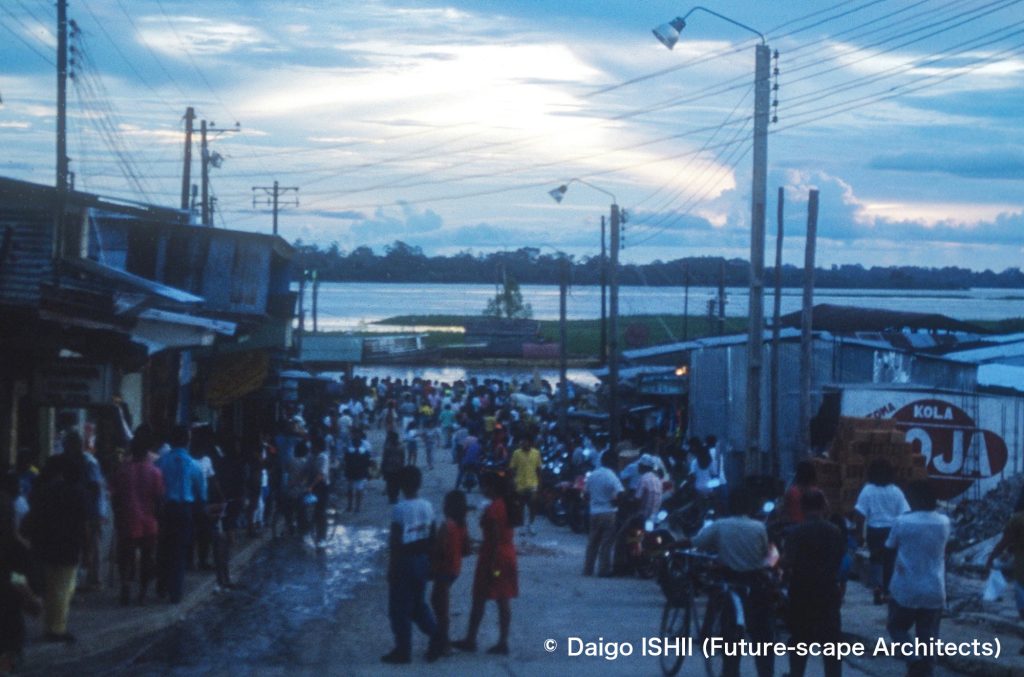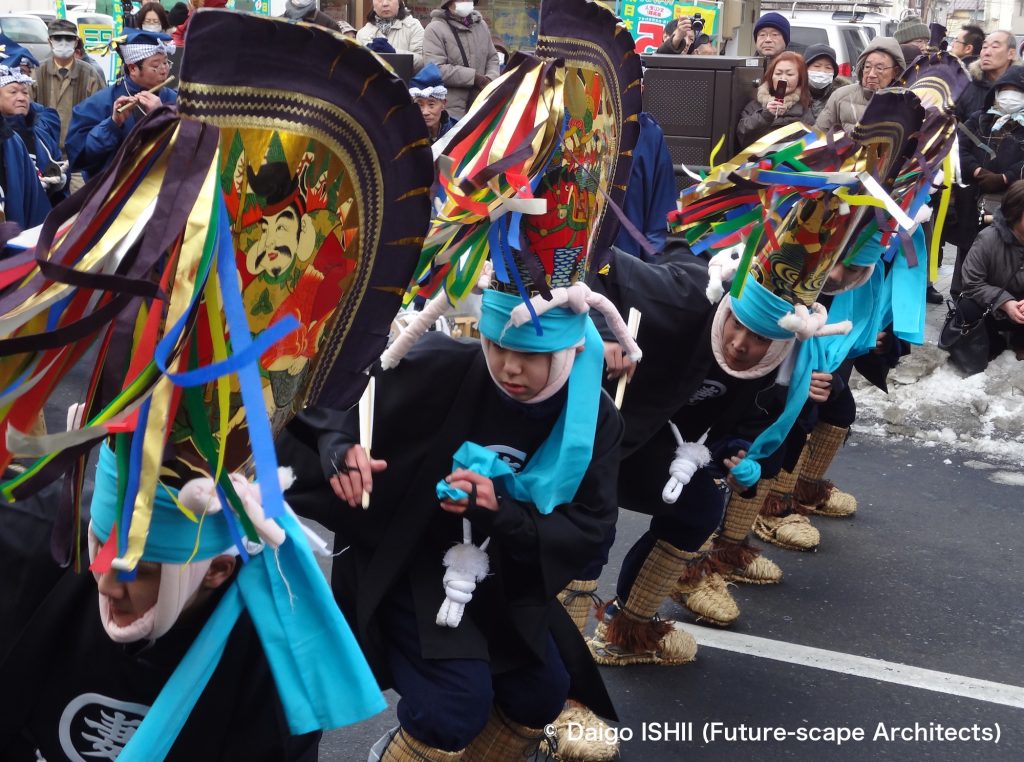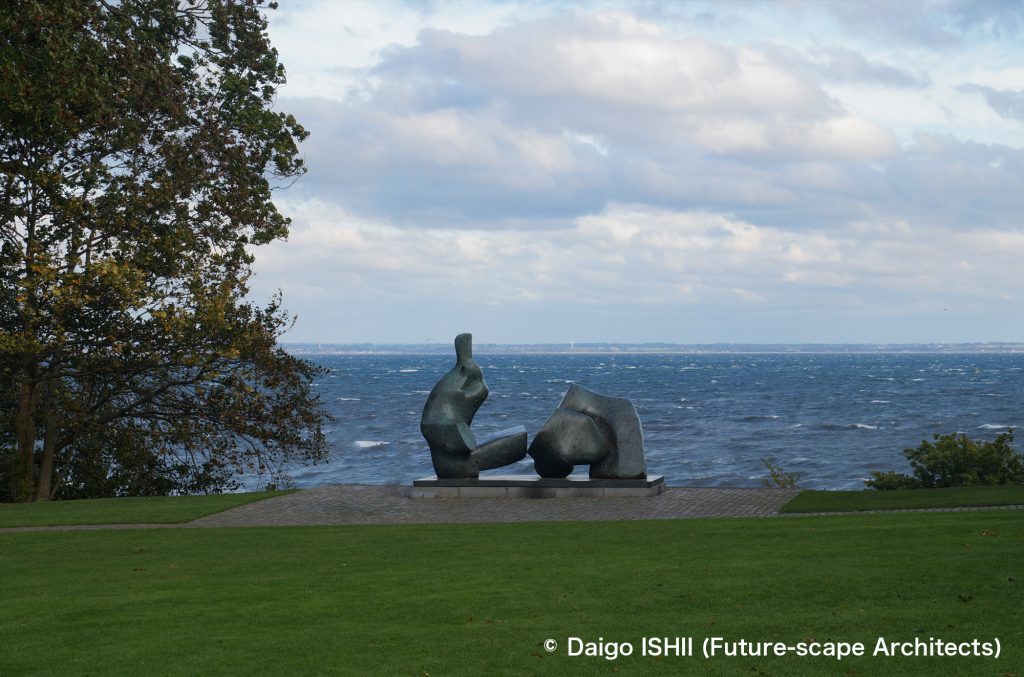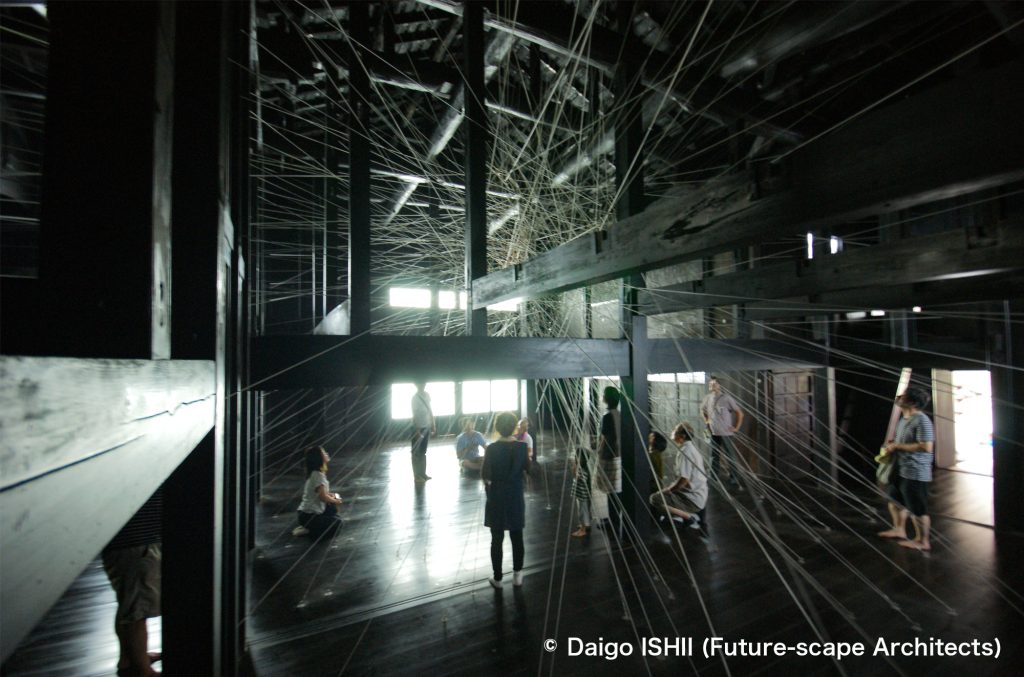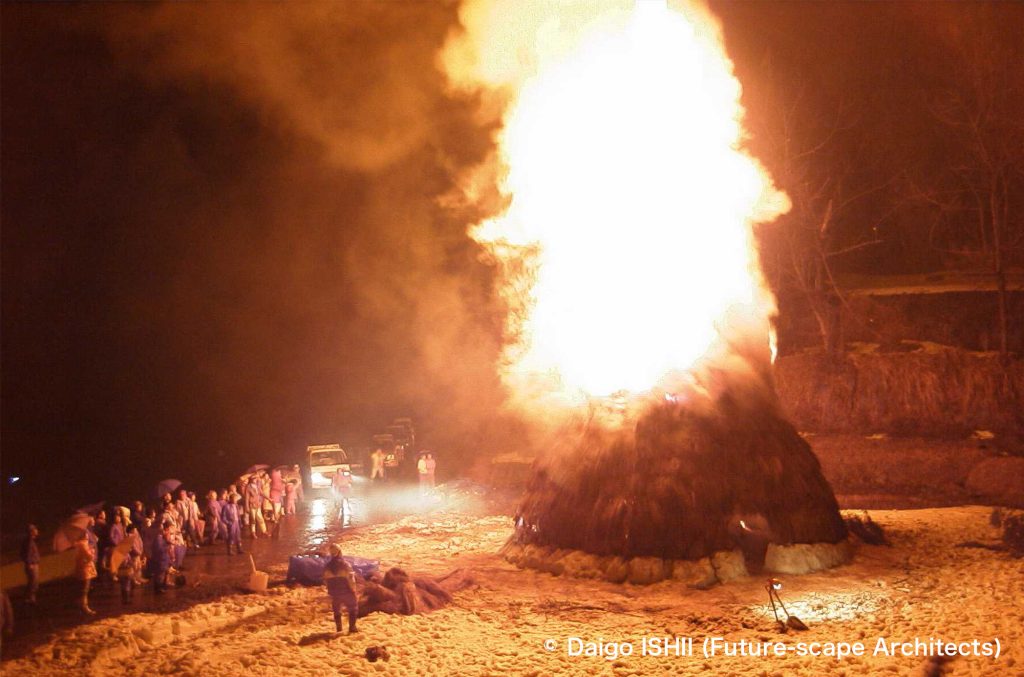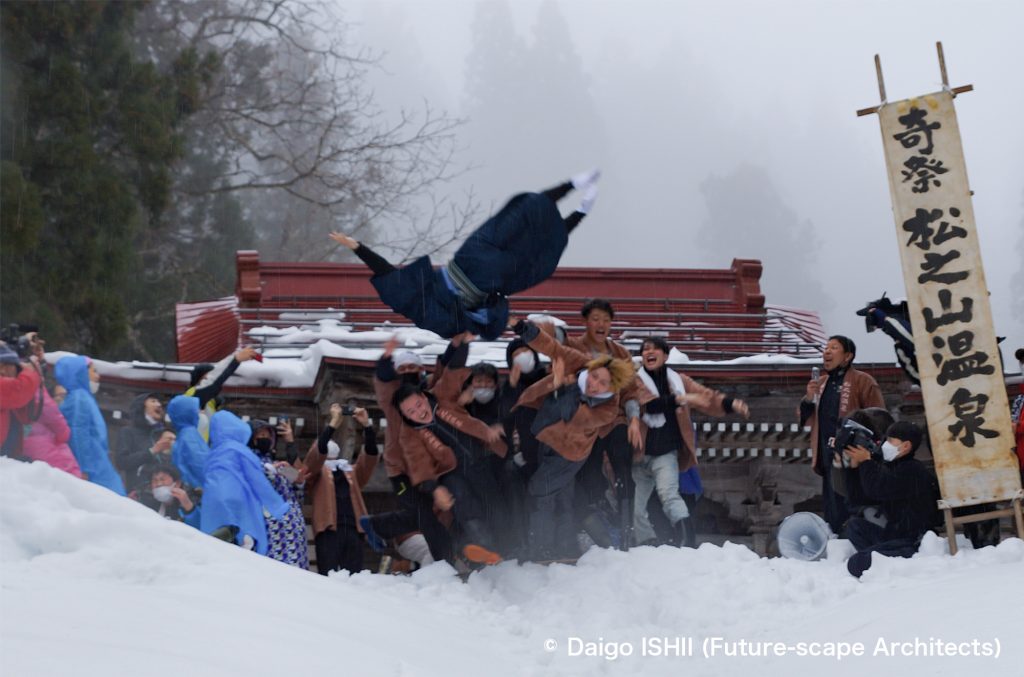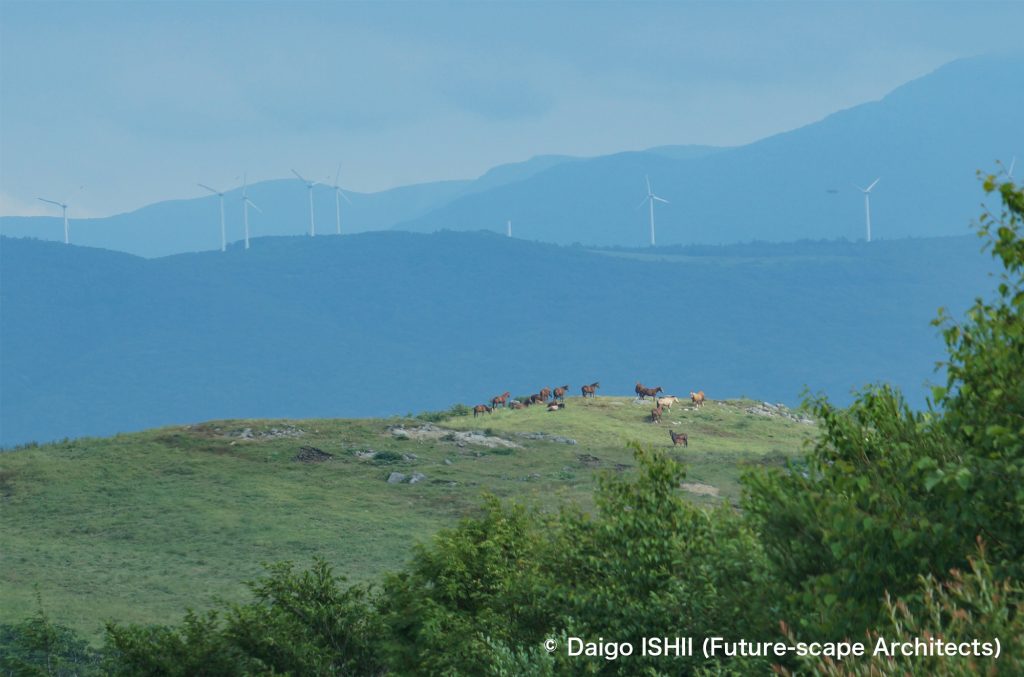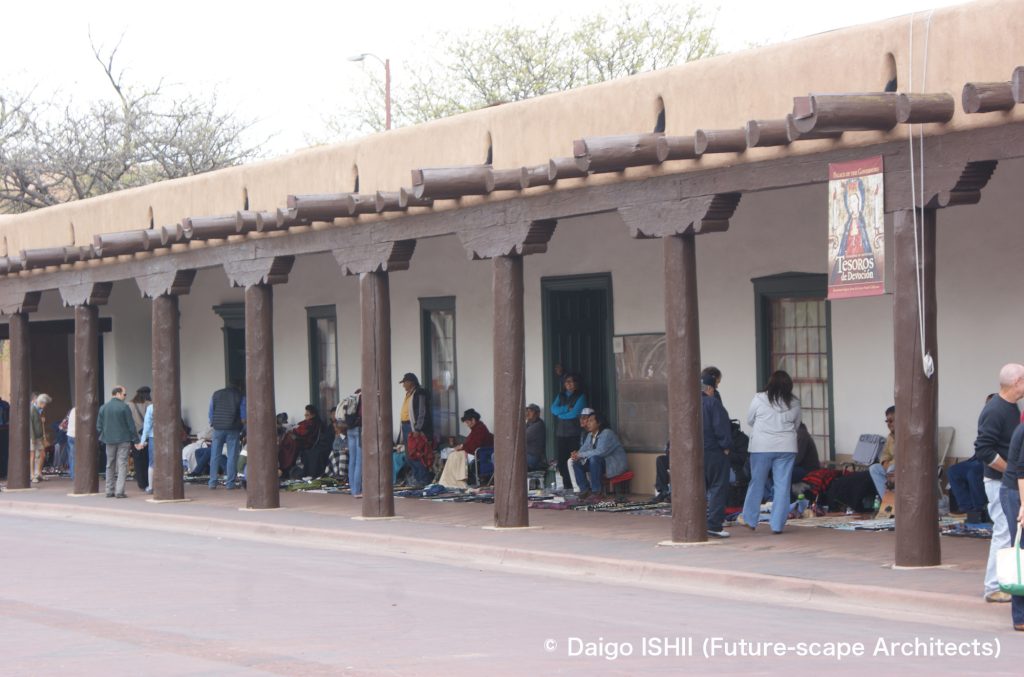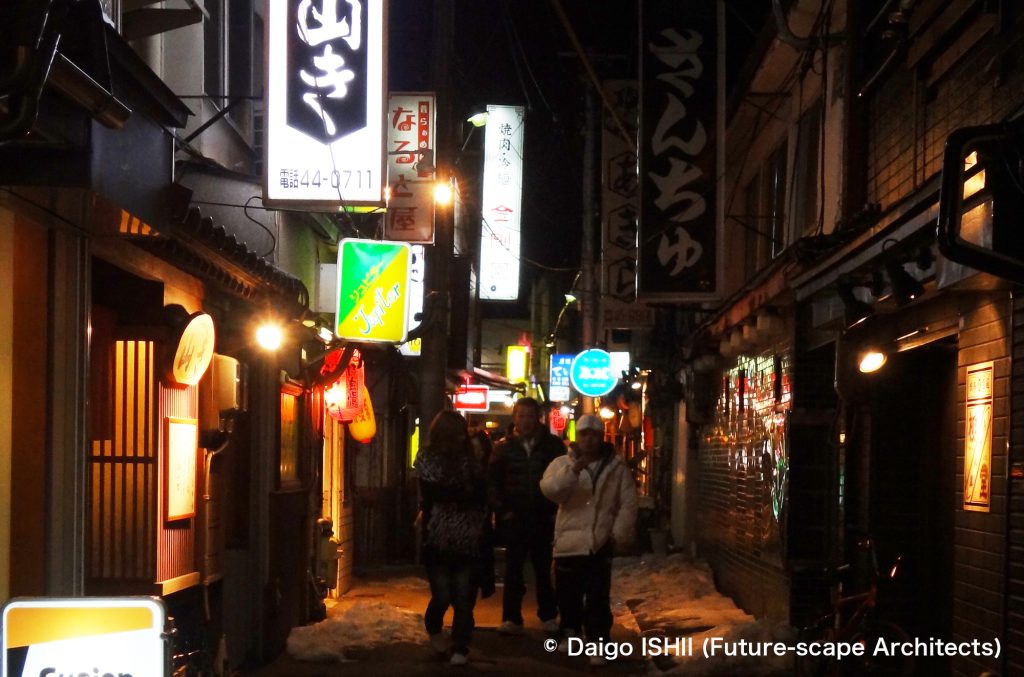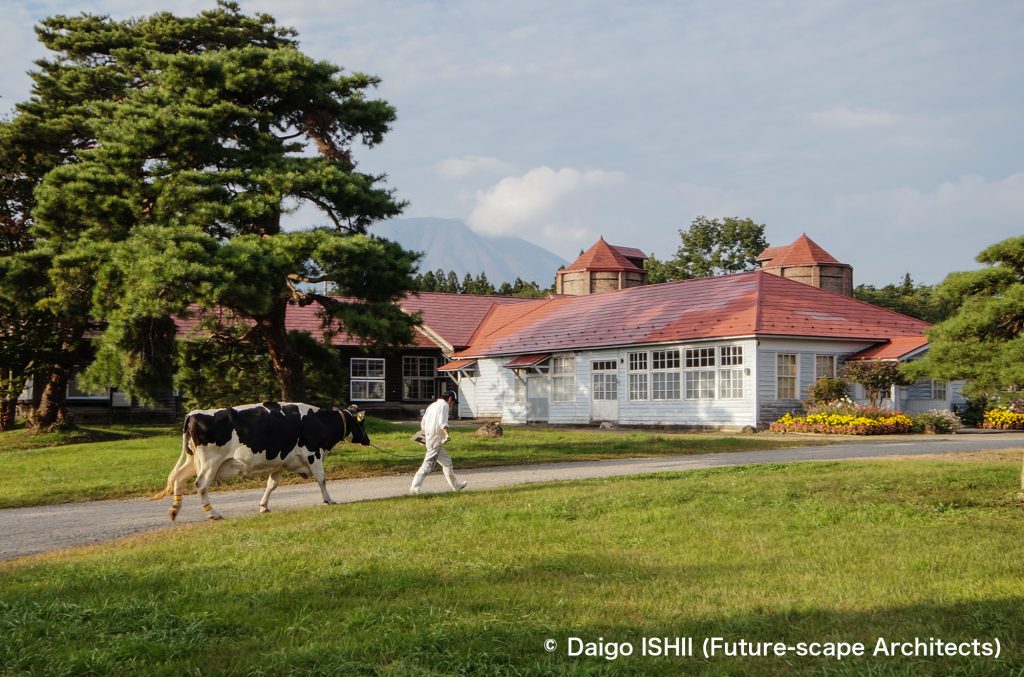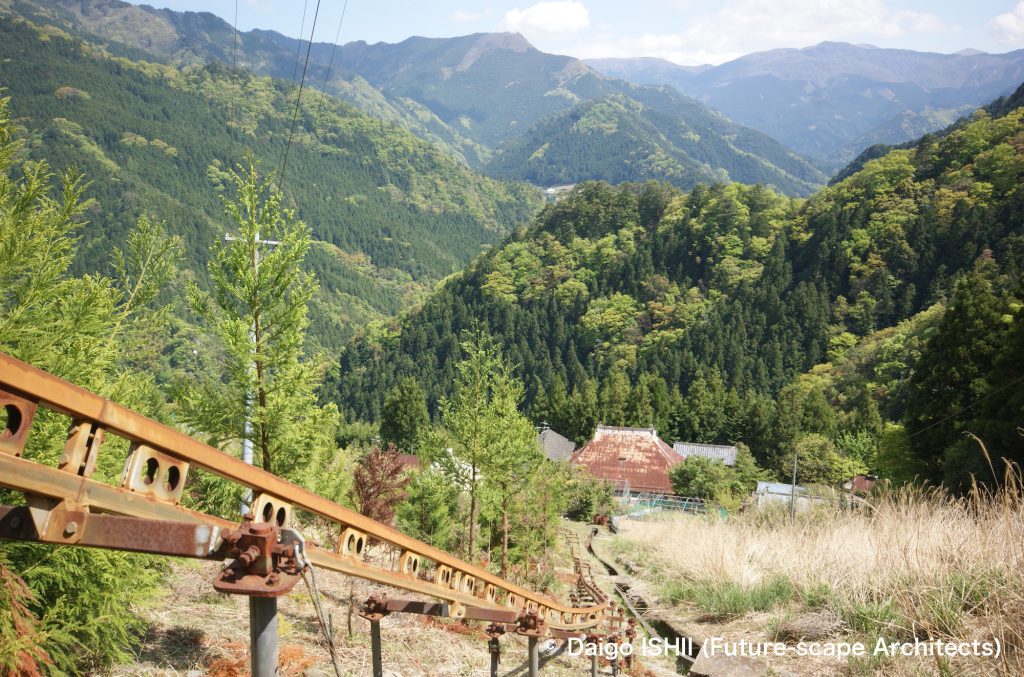Since this art festival has continued in the same region for 24 years, the presence of time emerges. Various time axes appear in the artworks.

Even if it is not a long-running art festival, it is common for artworks created in historic locations to refer to the long history of the location and the memories of the houses and buildings that serve as the place for the artworks.
Among many such artworks that have been created in Tsumari with old culture and landscape, the one that remains in my memory is Nobuho NAGASAWA's "Seeing Eyes" in 2003. She placed double-layered rotating lanterns inside an old house and printed portraits of several generations of one family on the sheets of each lantern. The double sheets rotated separately, and the faces and eyes of different generations overlapped and blended. The feature of each family that has lived down continuously from the past to the present and will continue into the future emerged.
As for culture and artifacts passed down in the area, some artists create archives as art. The time of communities that has continued for hundreds of years is in danger of being cut off due to aging and population decline. They are looking for ways to connect it to the future.
It is a period of the art festival over 24 years that we have seen changes in the concept of art and the society behind it, and the rise and fall of artists. Some artists have been presenting their works for a quarter of a century, and we can also trace the chronological changes of those artists.
One of them is Christian BOLTANSKI. His first work in 2000 was "Linen." He stretched wires across the river and hung many used clothes collected from residents. It was a simple but memorable work, with the old clothes fluttering in the wind, evoking the presence of people who once had lived here but were no longer here. There is also a story of how the artist, who was reluctant to interact with the residents, gradually changed his attitude through his relationships with the residents who supported the installation of his work. Art also had an impact on the artist himself.
In 2003, BOLTANSKI collaborated with Jean Kalman on "Voyage d’Eté." This is one of the most memorable works through all the Echigo-Tsumari Art Triennale events to date. An installation of electric fans or flowers occupied the entirety of a closed elementary school, emanating the summer vibes and memories of the many people who passed by here. I was impressed by his skill.
Later, this place became his permanent work, "The Last Class," which could be called The BOLTANSKI, in collaboration with Jean KALMAN. "BOLTANSKI Exhibition" at the empty National Art Center, Tokyo, was more compatible with his sense of absence than I had imagined, but it still couldn't compete with the power of the abandoned school.
His 2012 installation "No Man's Land" is a work in which a crane grabbed and dropped a lot of used clothing all day, synchronizing with the sense of absence after the Great East Japan Earthquake. It was depressing for me to watch. But two elementary school students, who accompanied me, enjoyed saying it was cool. I felt that the ways of looking at things are multifaceted, and this might be hope.
BOLTANSKI's works, including his other works, always fluctuate with time at the backdrop, with the theme of absence. We can trace how his works have changed over the 21 years' time until he died in 2021 since he had continued to create in the same area in this long-running art festival. The two timelines intersect: the artist's view of time and the passage of time at the art festival.
Ilya and Emilia KABAKOV do not seem to have many permanent works left overseas. In Tsumari, they also repeatedly created permanent works from the first event until the death of Ilya in 2023.
Unlike an exhibition room in a museum, the works continue to be exposed in a real changing environment over a long period, and the physical time is reflected onto the works and metamorphoses it.
In "The placenta - Misyaguchi" created by Hiroshi FURUGORI in 2006, he excavated the ground to built a large courtyard, spread gravel on the ground, and hung a wooden roof over a mud wall, making appear a dark womb-like space. The newly completed space was somewhat spiritual for me, so I didn't like it. In revisit in 2009, the air from the completion time was retained, and my impression remained unchanged. It was 2018 that I overturned my impression after a long time. Most roofs had rotted away, and trees and grasses were growing willfully. While half returning to nature, a landscape was emerging that nature could never have created. Over 12 years, collaboration space by the artist and nature generated. The theme of this artwork might be not about space but time. Did FURUGORI envision the ruins? I would like to see the changes over the decades ahead.
Time The long history of Tsumari where old culture and scenery remain, and the memories of the houses that serve as the place for the artworks.
2003 Nobuho NAGASAWA ”See-through Eyes” (No longer in existence)
It was installed in a local house in Minami-Yoroizak community. She placed double-layered rotating lanternsand printed portraits of several generations of one family on each lantern. The double sheets rotated separately, and the faces and eyes of different generations overlapped and blended. The image of each family that has lived down continuously from the past to the future emerged.
English Website
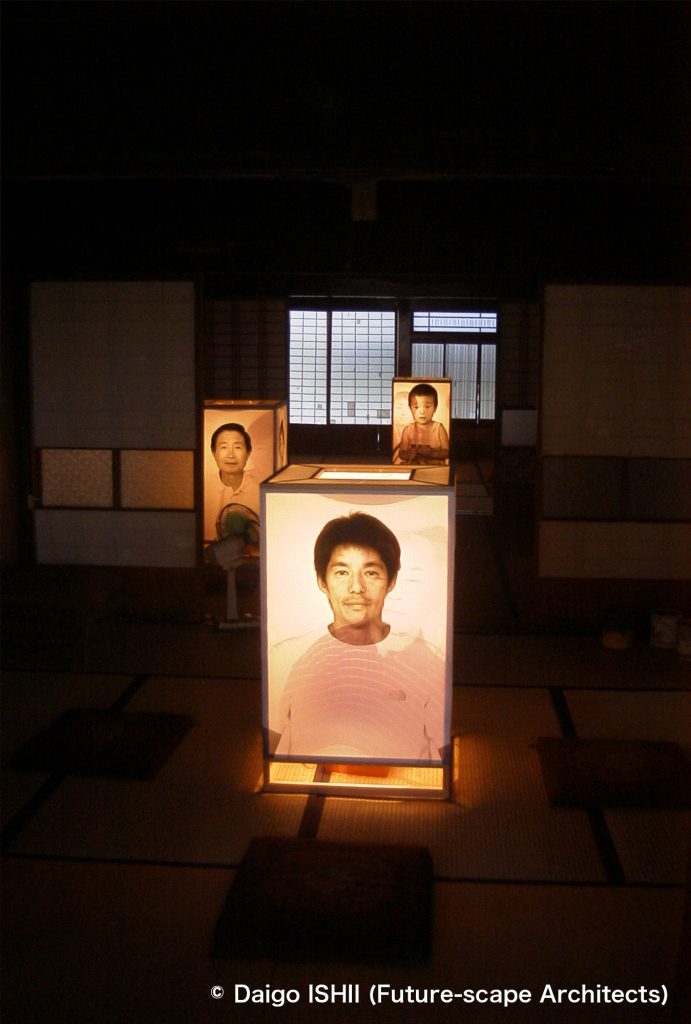
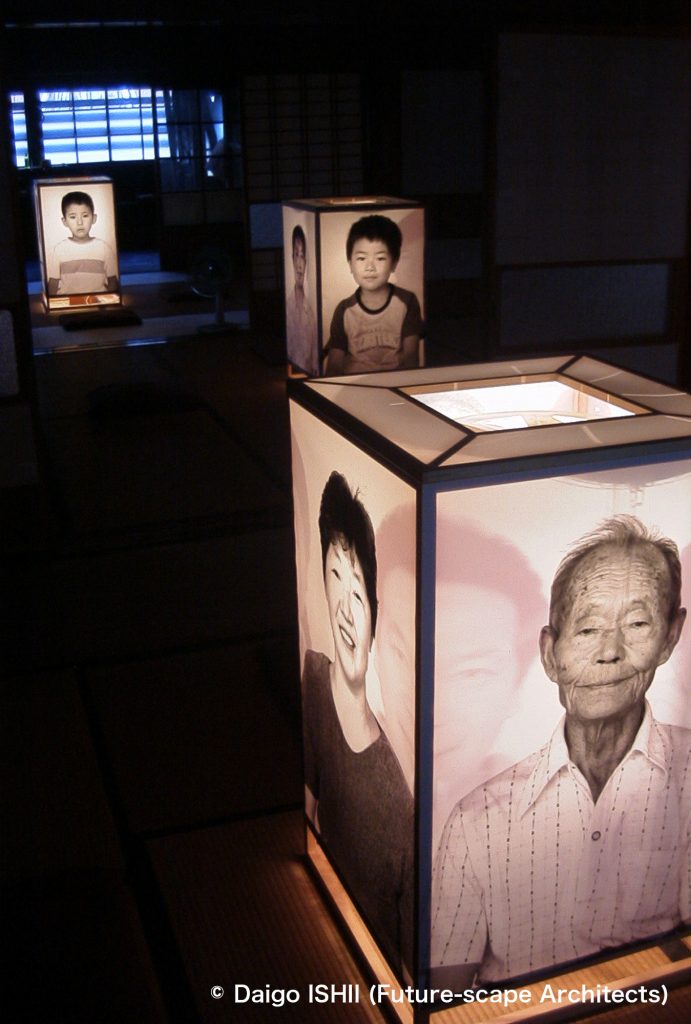
2006 Junichi KURAKAKE + Nihon University College of Art Sculpture Course ”Shedding House” (Now opening except winter)
This work carved out all of the interior pillars, beams, floors, and ceiling boards of an old wooden house in the Toge community. Through this work, two time emerged simultaneously: the surface that had accumulated time over the years of the house, and the fresh color of the wood from the time of construction that was hidden underneath.
English Website
https://maps.app.goo.gl/gcr2UXAVnxAaFYYq5
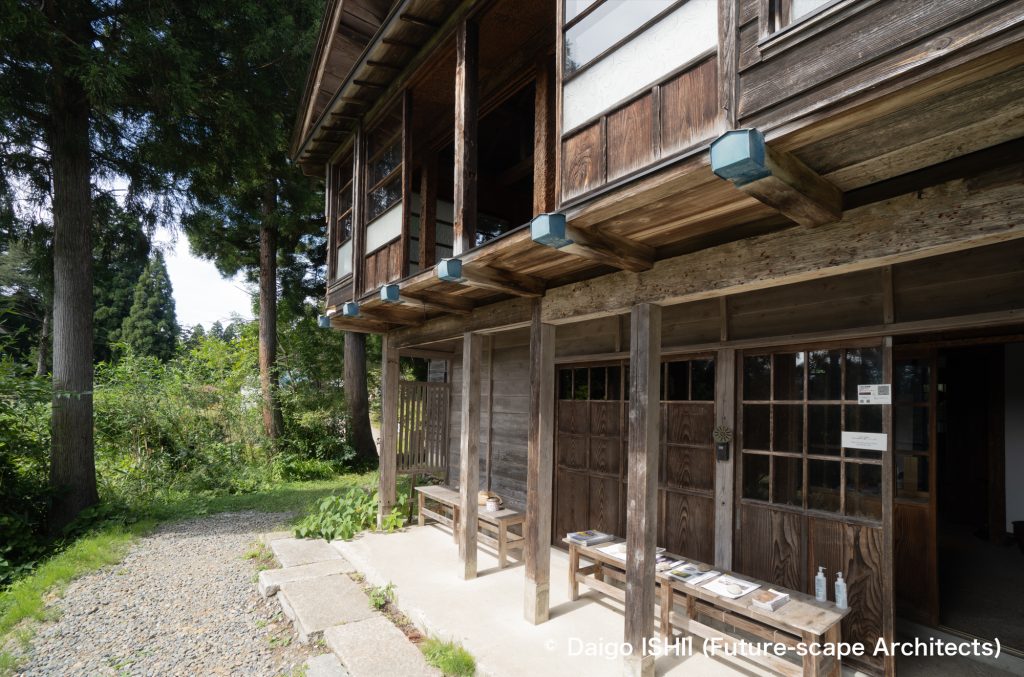
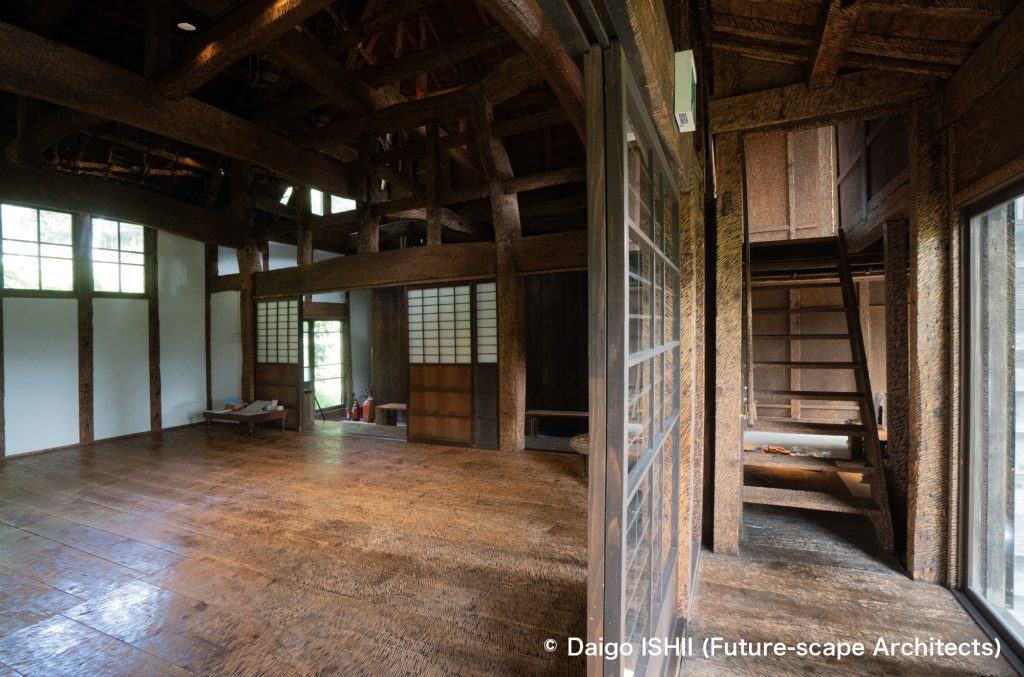
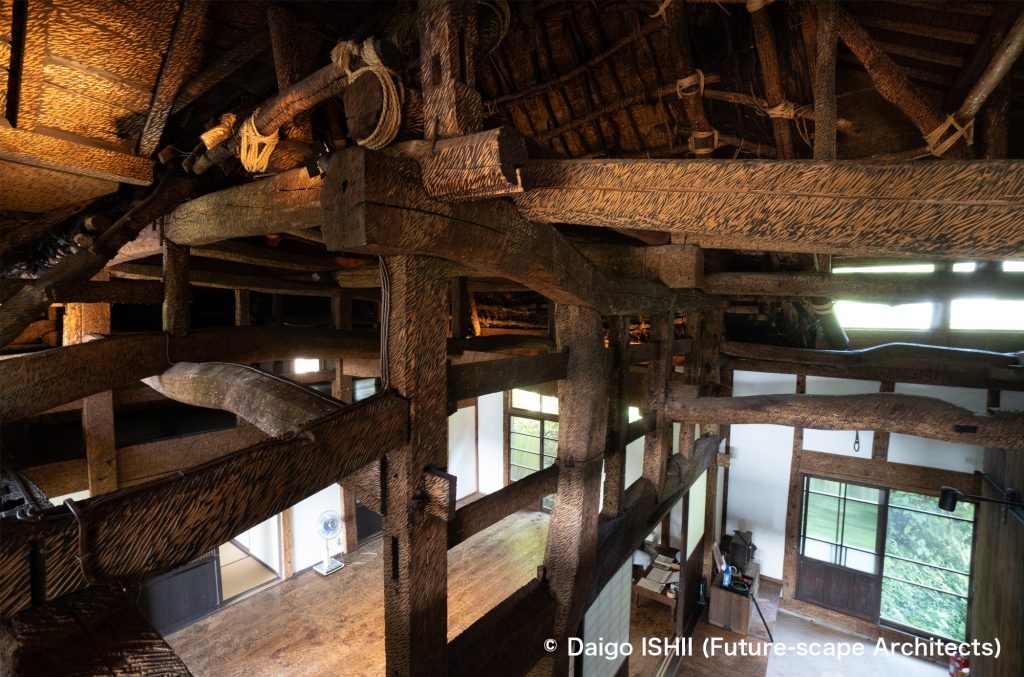
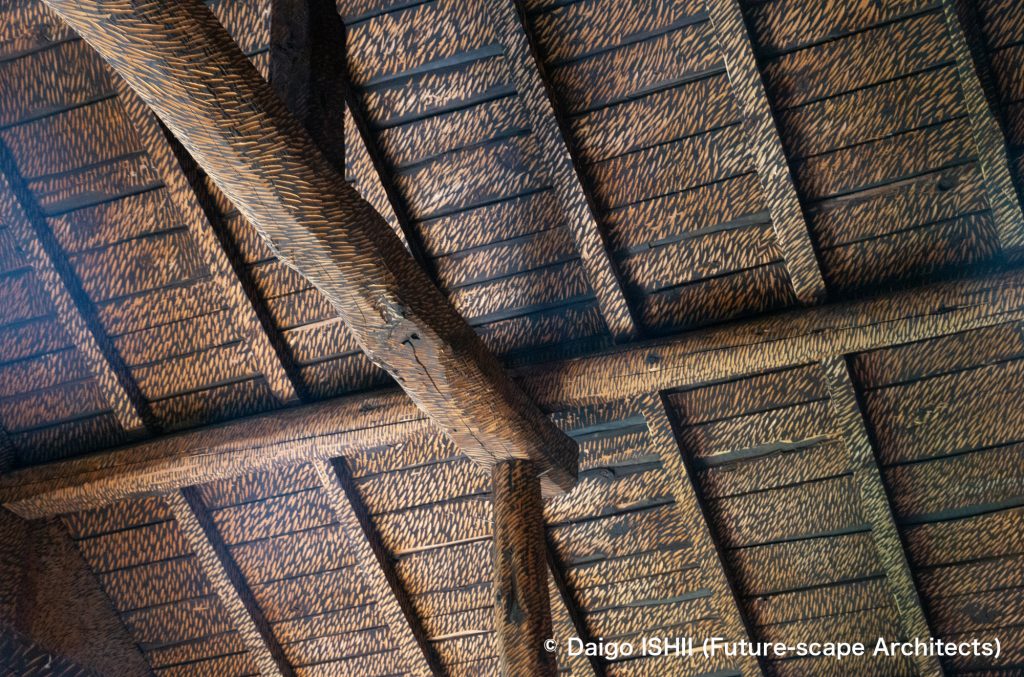
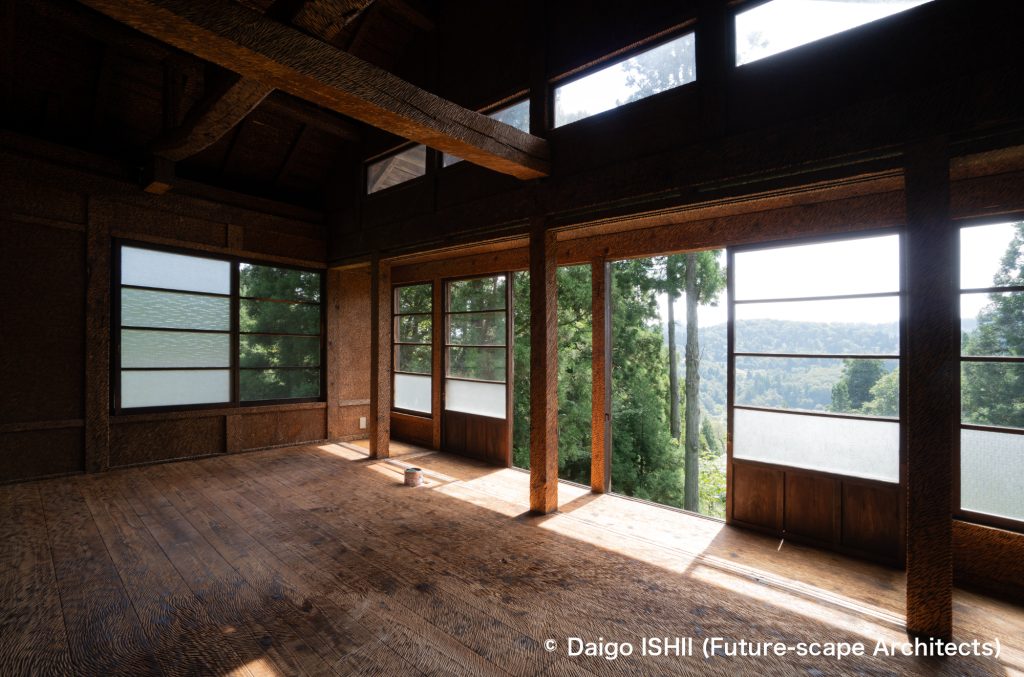

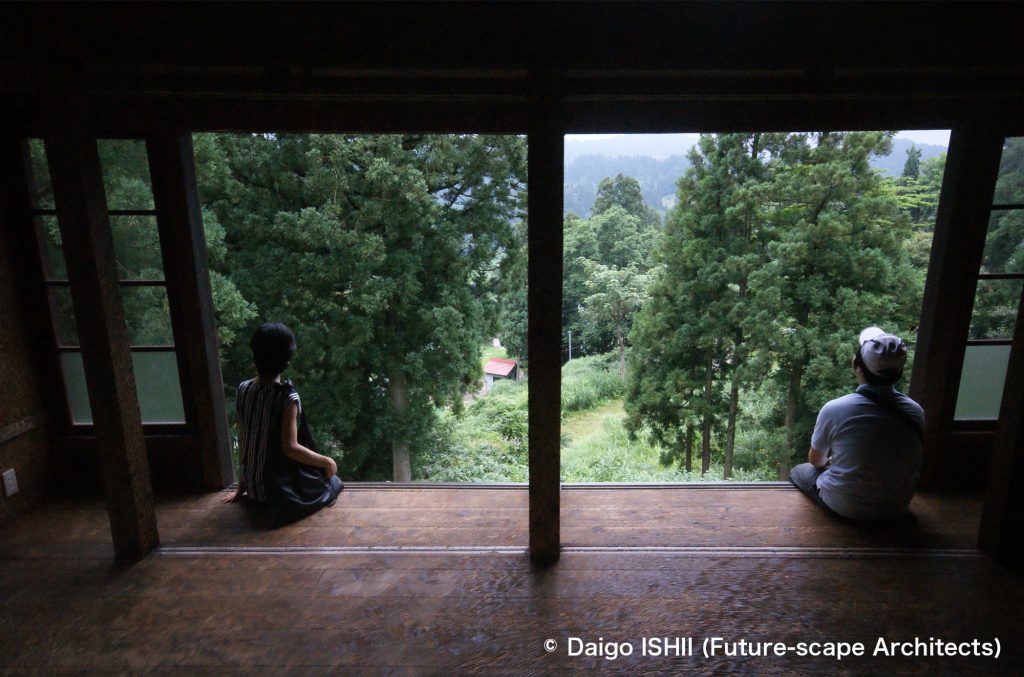
2012 Maaria WIRKKALA ”House of Swings” (Now opening except winter)
Based on the story of three sisters who lived in this house, several swings sway and sewing machines are in operation in the room, evoking the absence of the people who once lived here. The glass full of water placed on the swings was designed by the artist's father, the famous product designer Tapio Wirkkala.
English Website
https://maps.app.goo.gl/icTBaZhCdtmrmE3z6
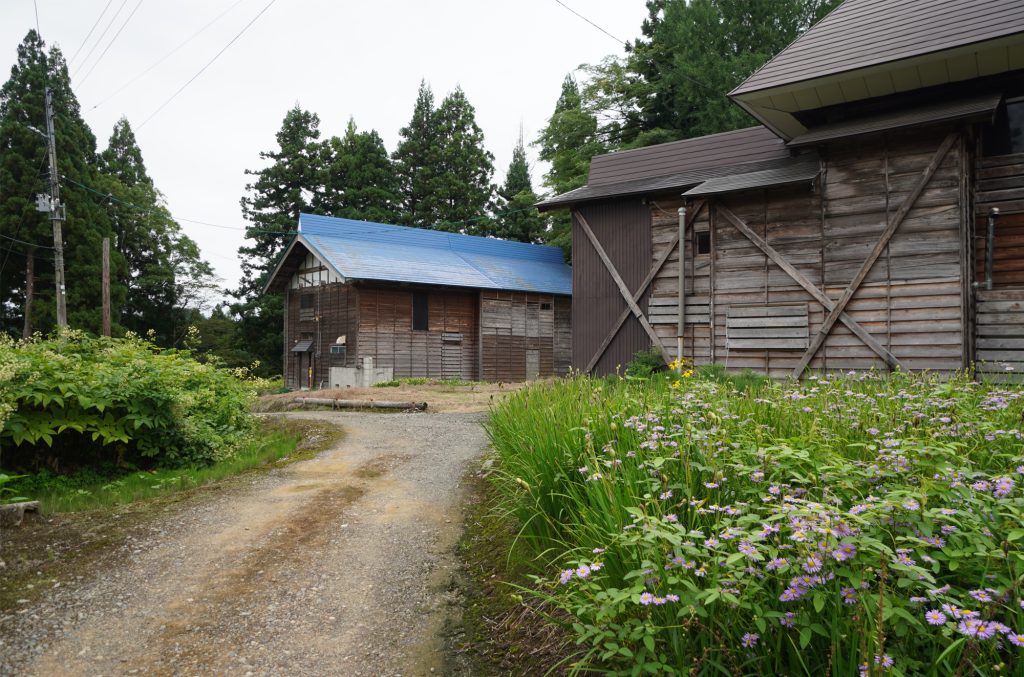
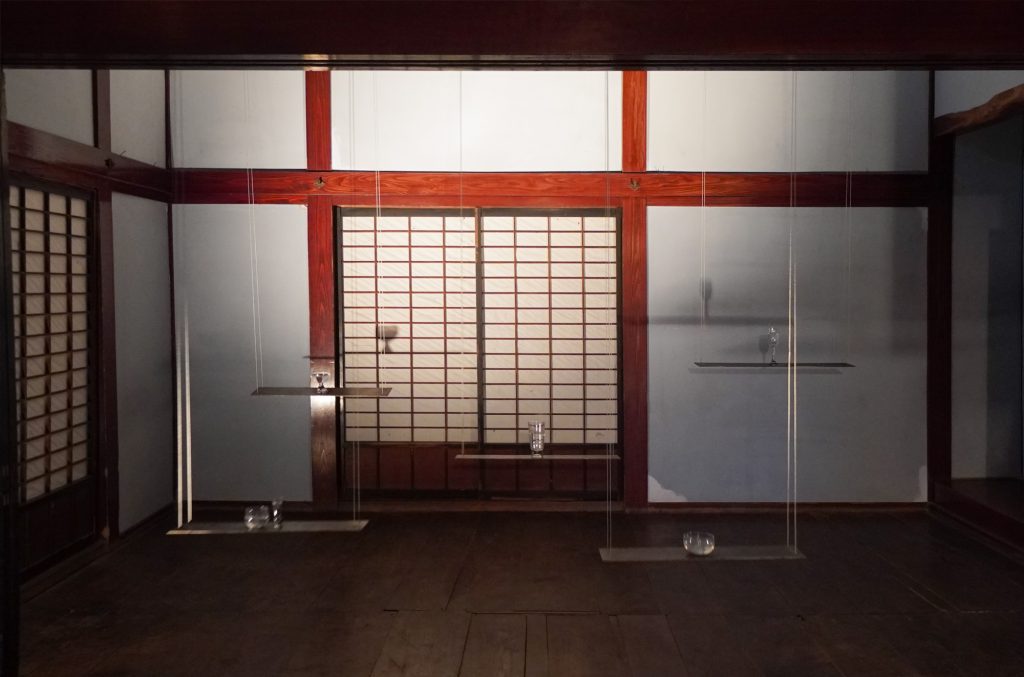
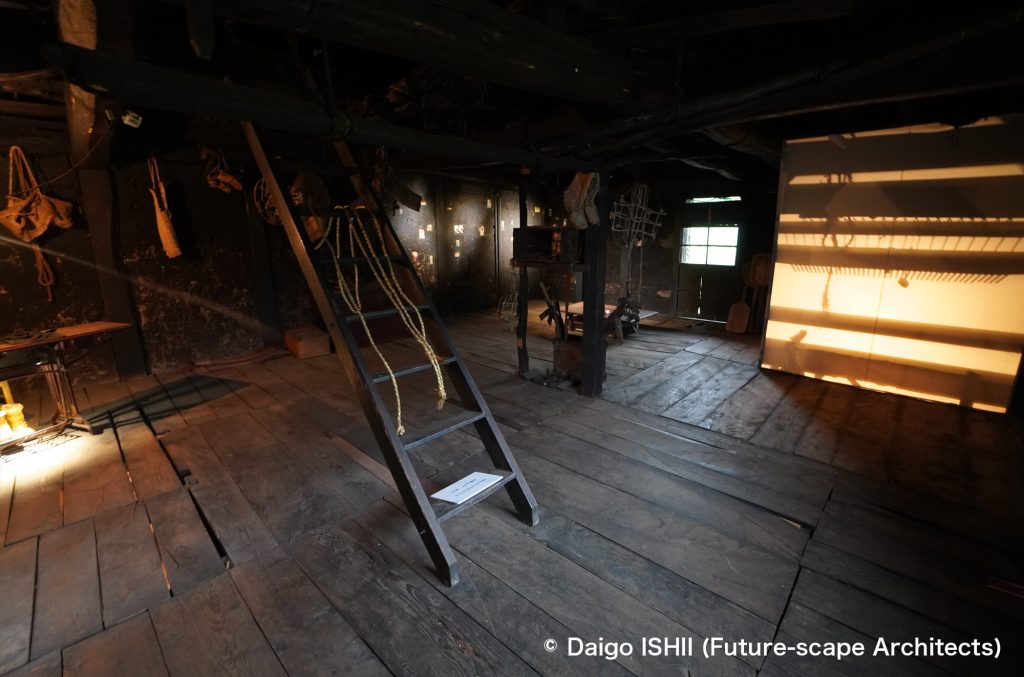
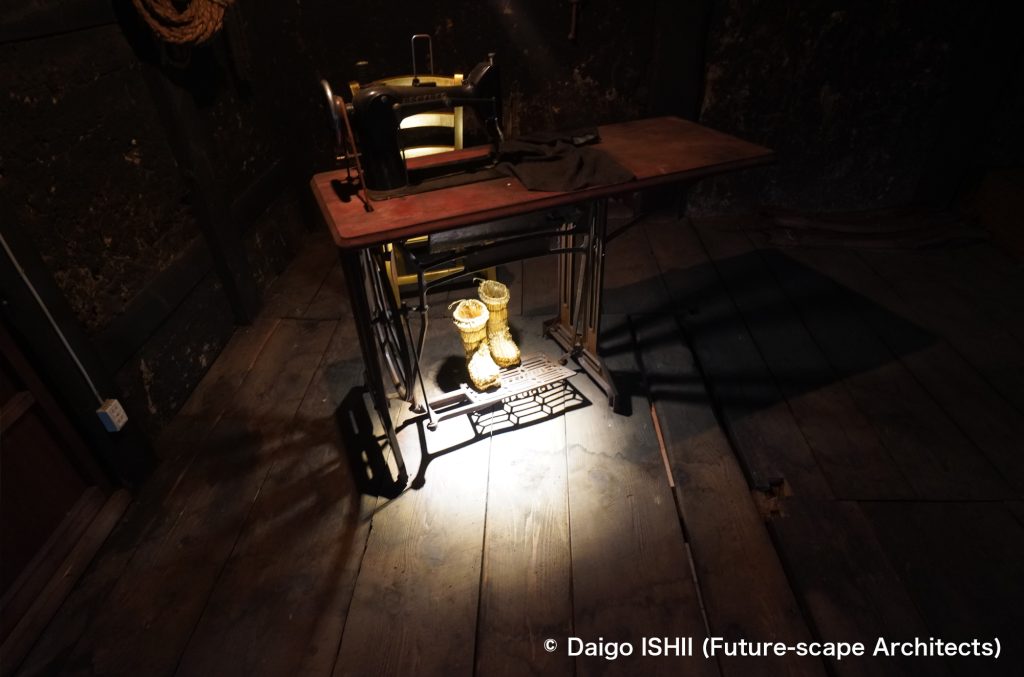
2012 Annette MESSAGER ”Les spectres de la maison Tsunné” (Now opening except winter)
It is an artwork in a 150-year-old house in the Tanokura community. Stuffed toys like scissors, knives, and other objects, which were produced by local residents and volunteer, are hung from ceiling, evoking memories of the house and the village.
English Website
https://maps.app.goo.gl/BJanz8TBmPe5oGYS8

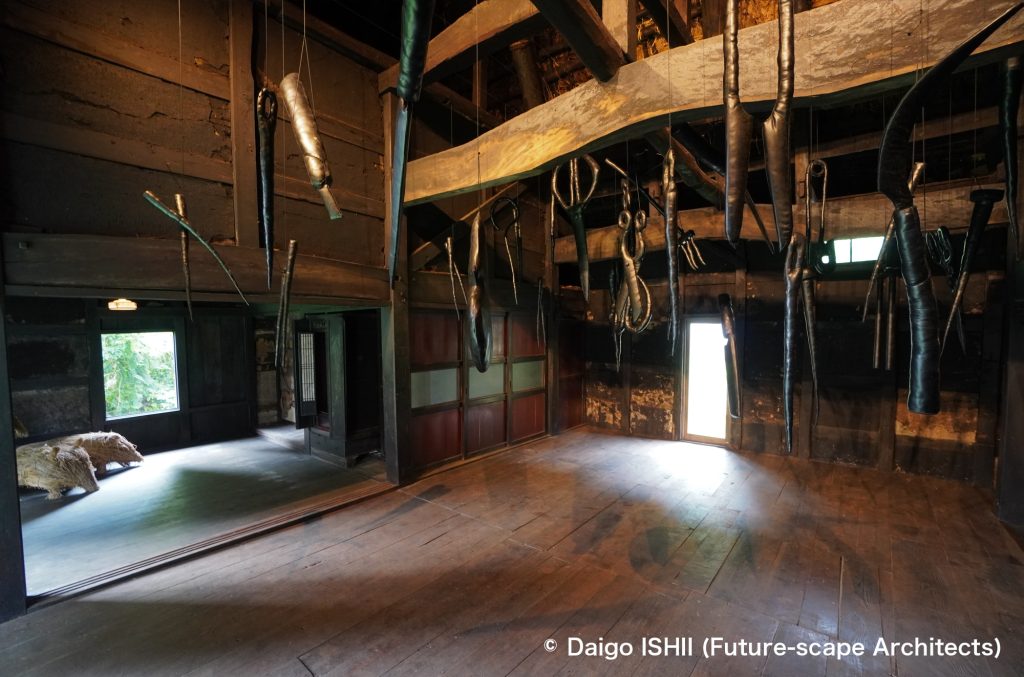
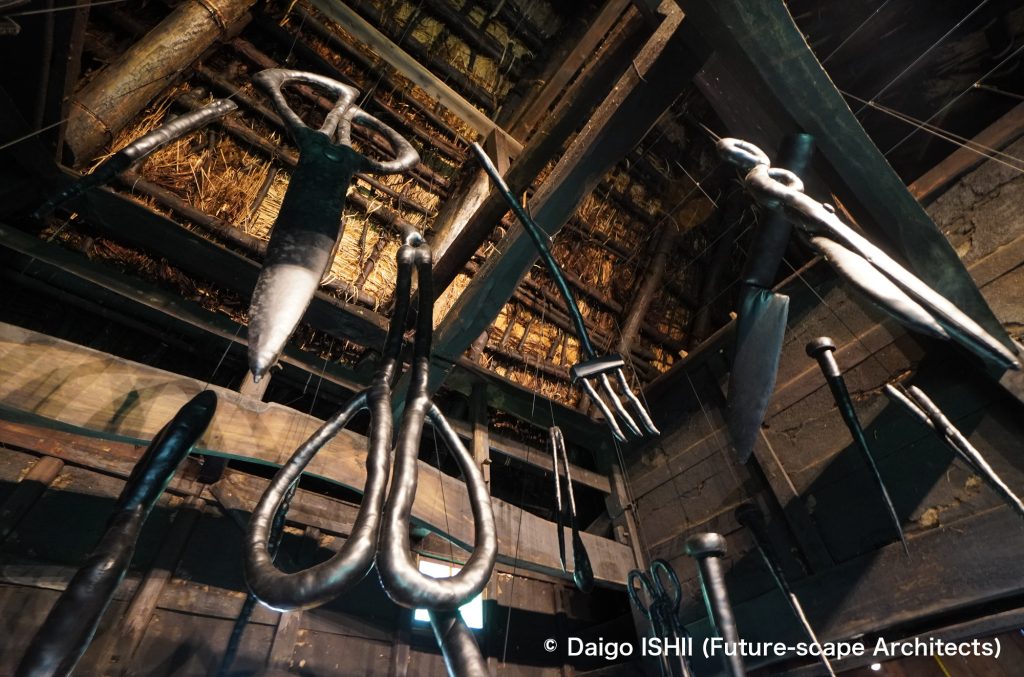
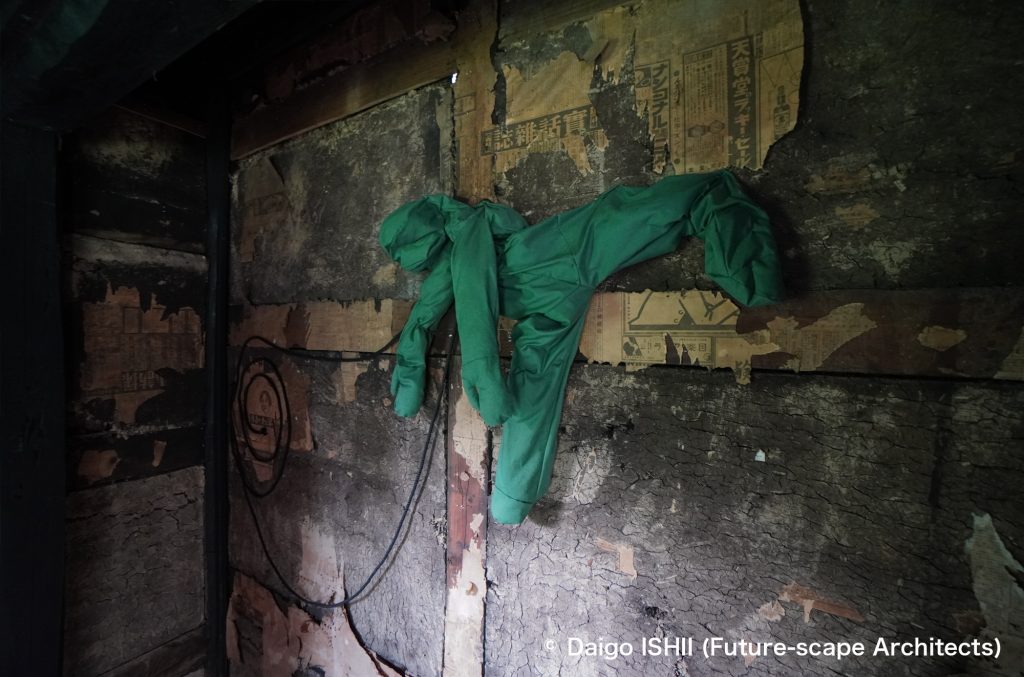
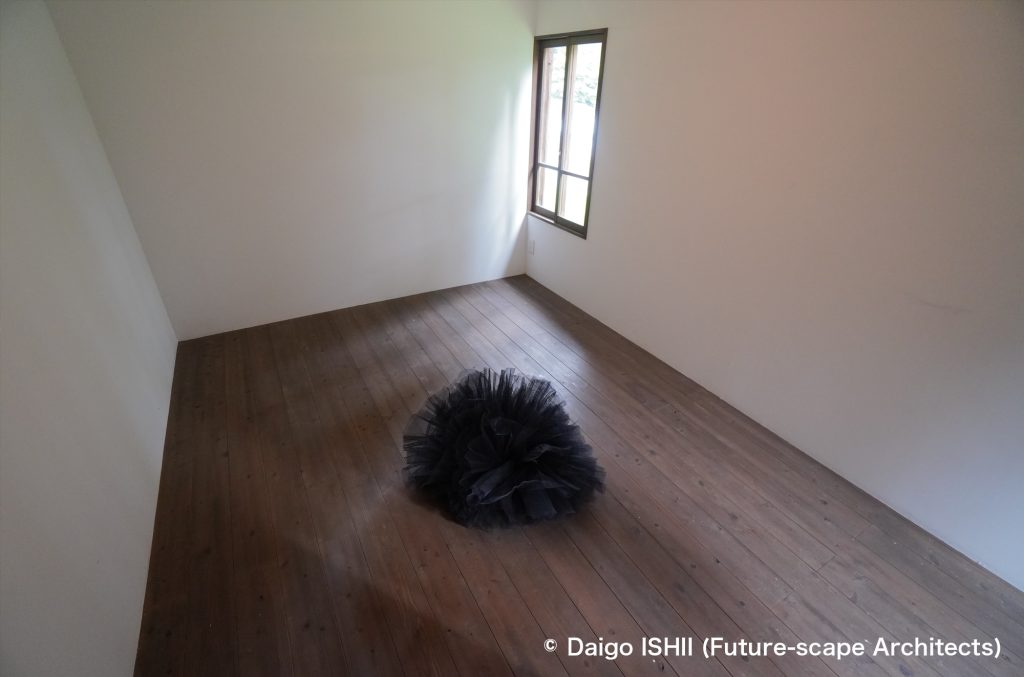
2015 Bul LEE ”Doctor's House” (Now opening except winter)
In the interior of a house that used to be a clinic in the Gamo community, a well of time was created with mirror sheets, where the interior scenery repeats, and an installation of remained medical equipments was placed there, evoking the atmosphere of the former clinic and the house.
English Website
https://maps.app.goo.gl/icTBaZhCdtmrmE3z6
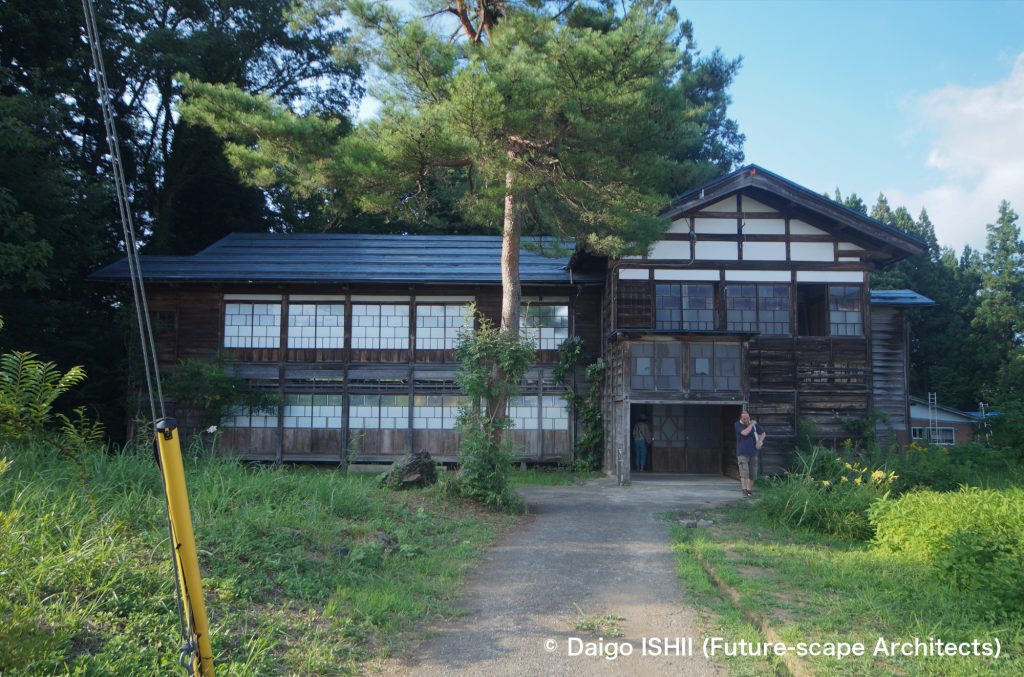
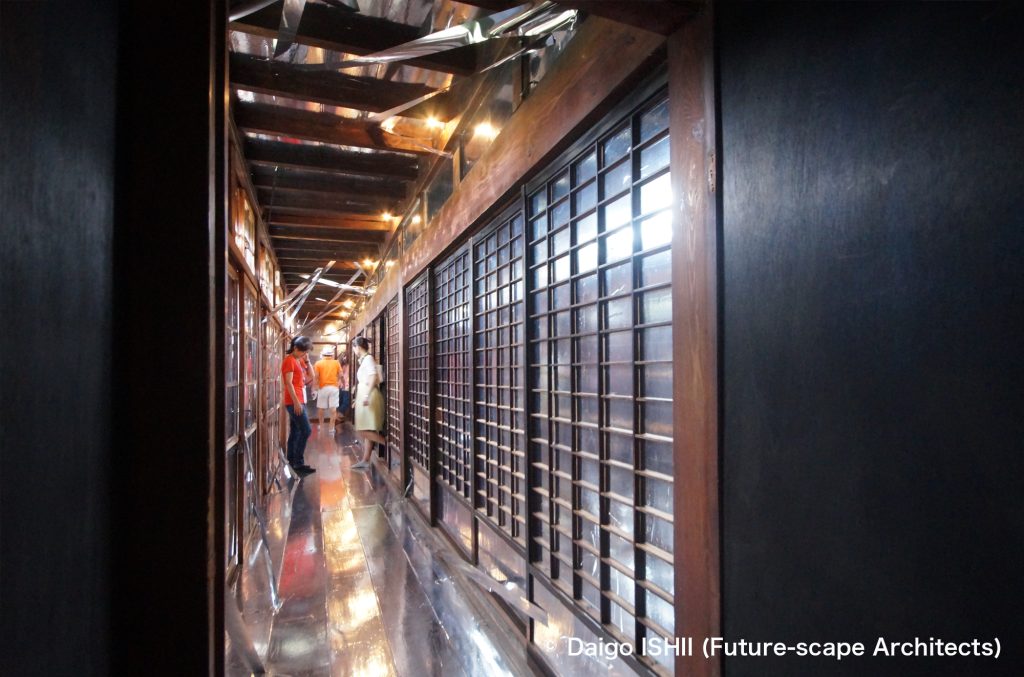
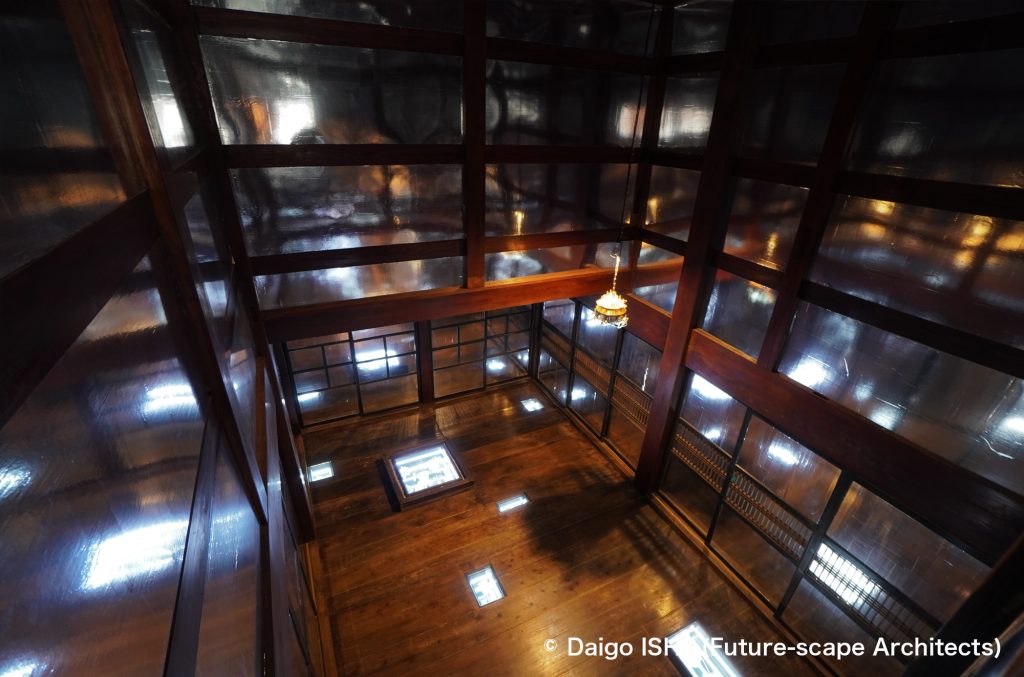
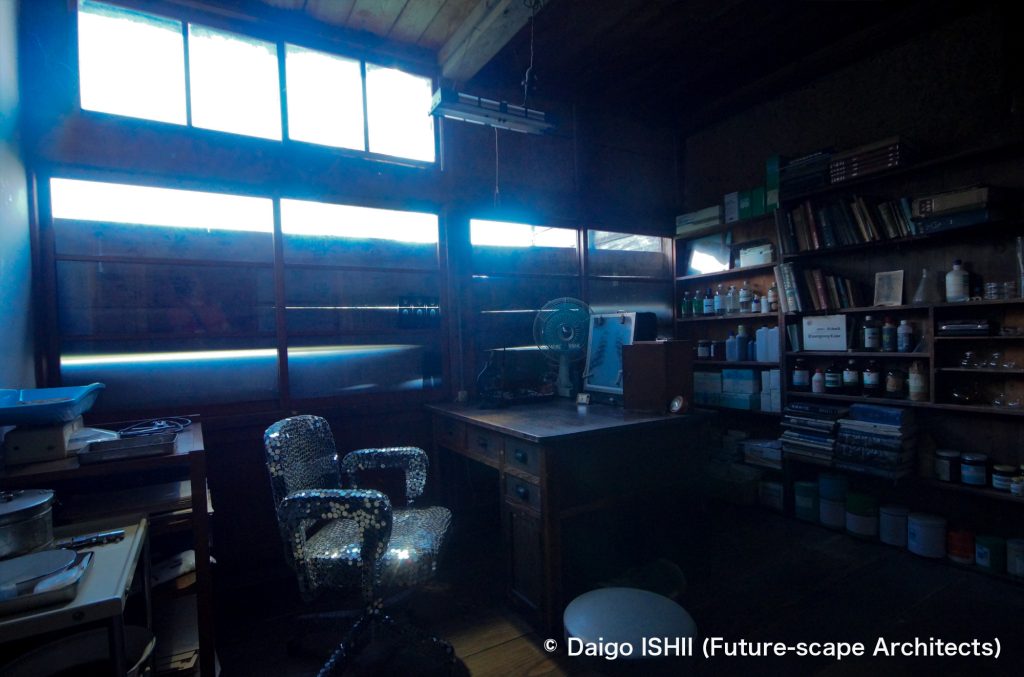
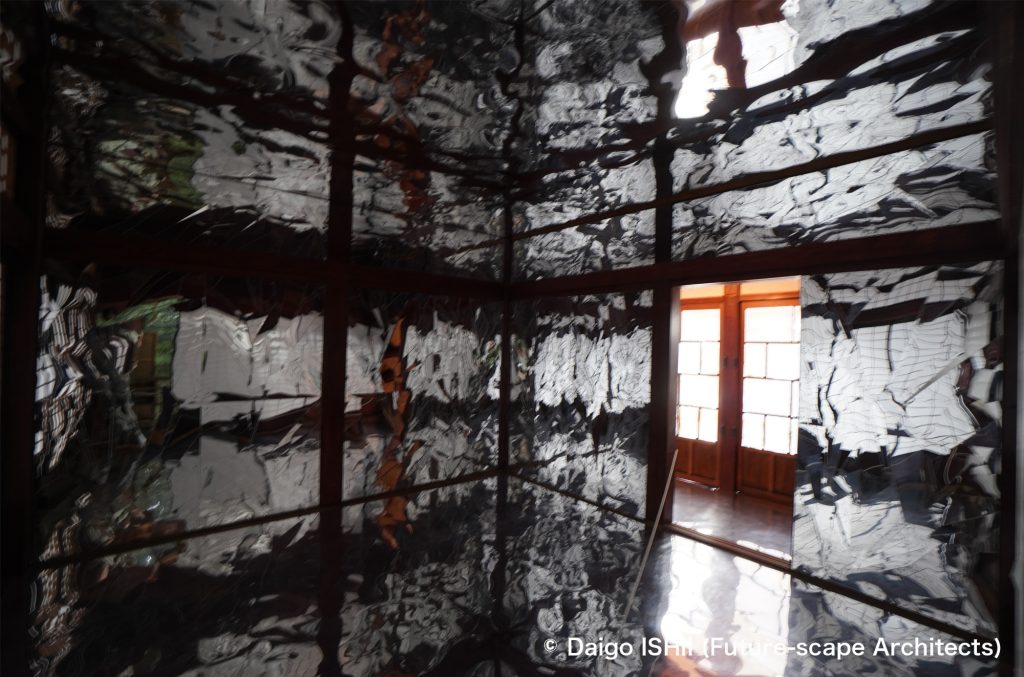

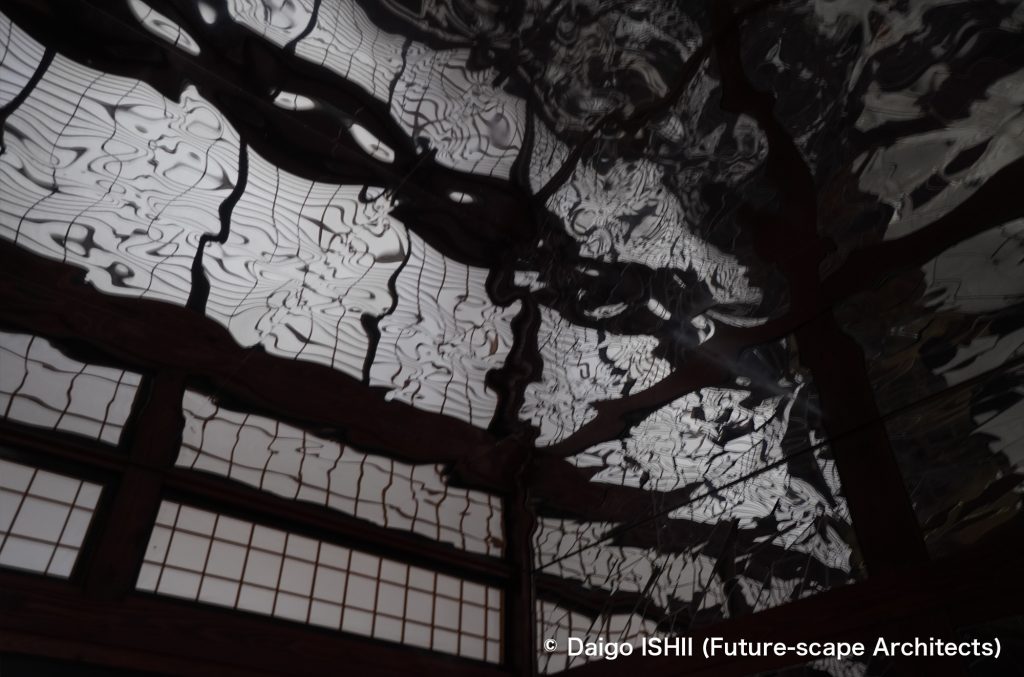
2022 Tohru NAKAZAKI ”Note to myself: For days when I will take a seat on a new tatami chair” (Closed)
In a luxurious residence located in Shinza community, Tokamachi, a story about acquiring a new Japanese floor chair (Shinza in Japanese) to replace an artist's old one, which has fallen out of use over the years, intersects with an installation in which various everyday items collected by the once owner evoked the former memories and sense of the house.
English Website


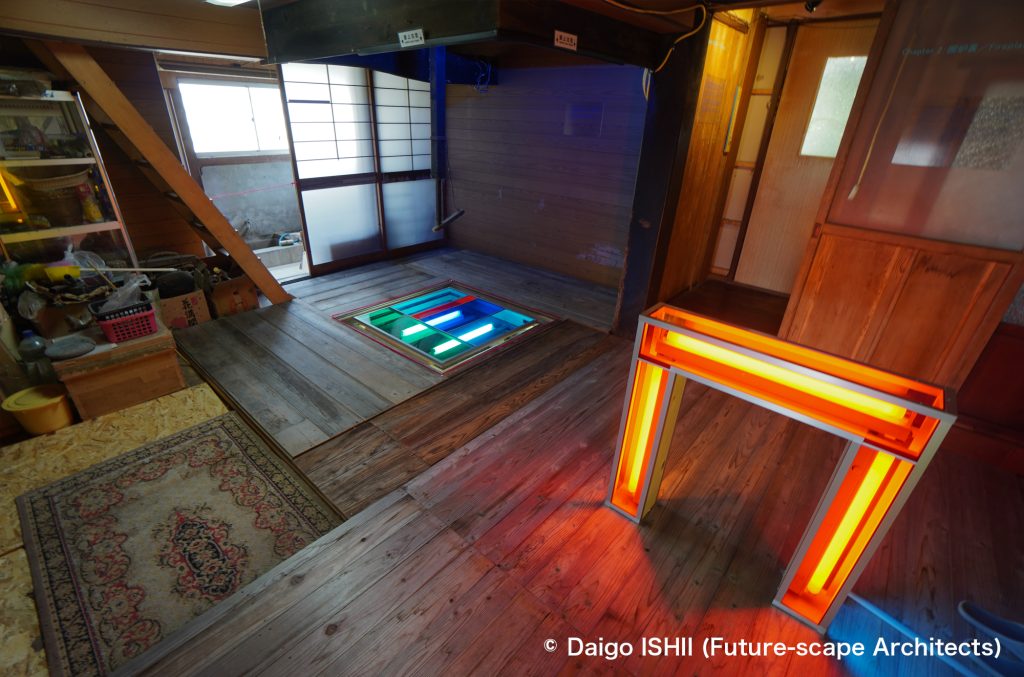
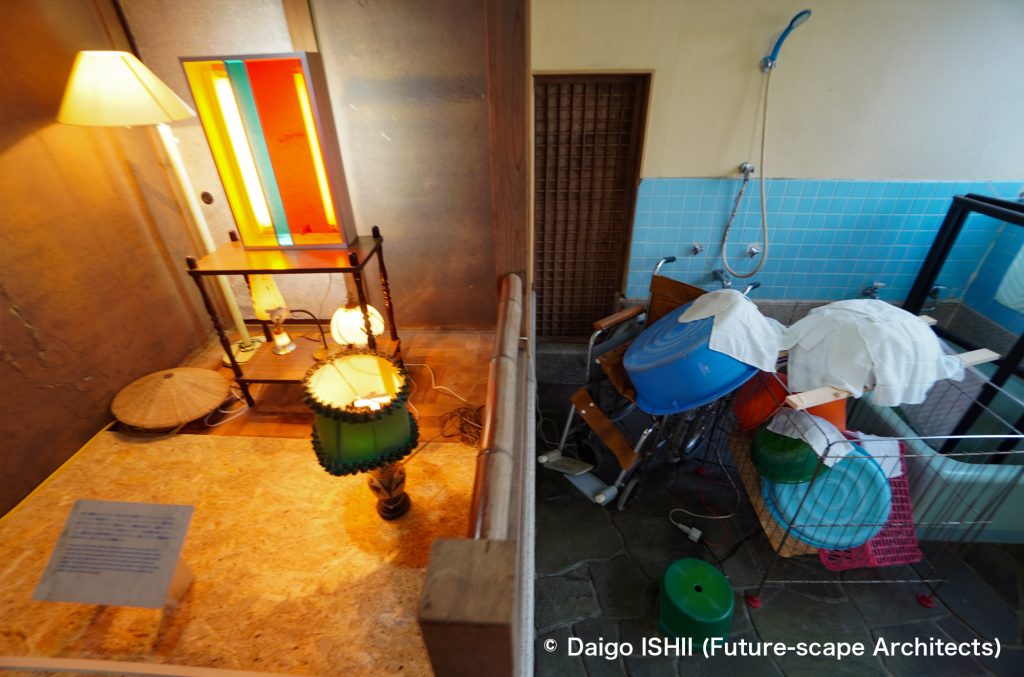
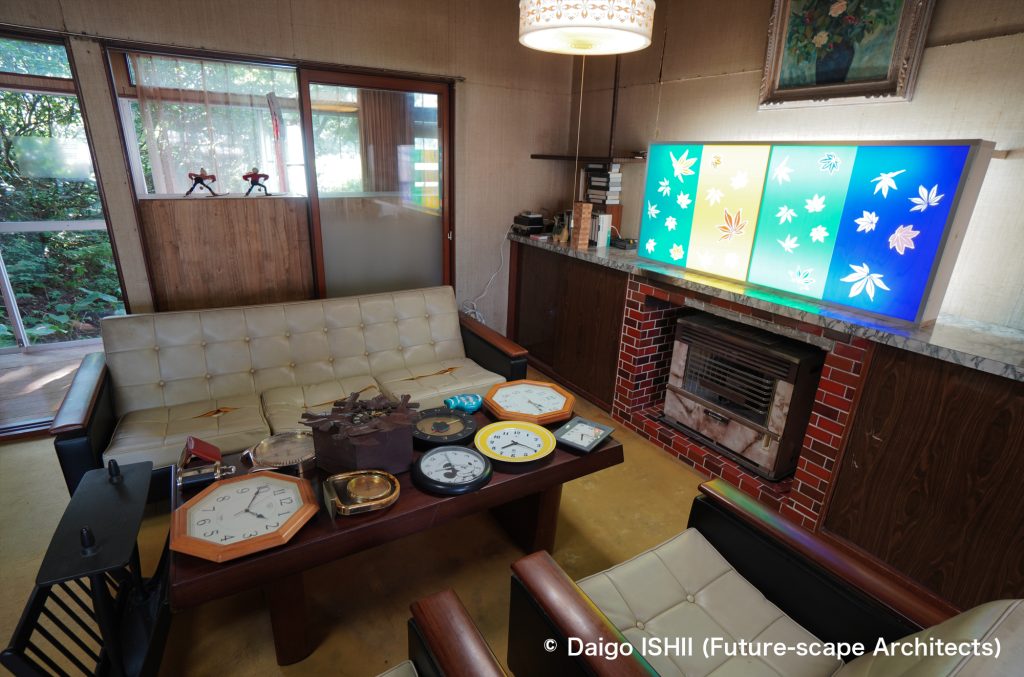
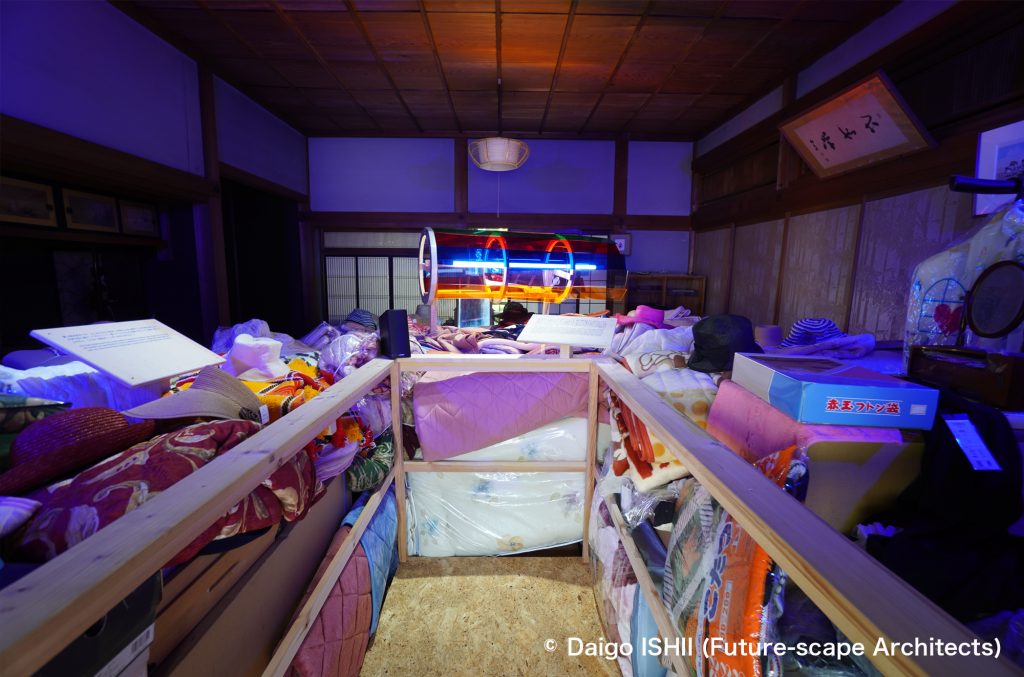
Time Archive of local culture and artifacts passed down in the area
2018・2024 Rikigosan / Riki KATO, Godai WATANABE, Shinichi YAMAZAKI ”Passages of Time Tokamachi Takakura Museum” (Opening during the 2024 event)
Using the former gymnasium of Takakura village in Tokamachi and the village's folk and agricultural implements that have been stored there, the artist group created an archive of the village that conveys the history and memories of the village. The artist interviewed the residents about the history of life in their community, and drawings based on their stories were hung on the exterior wall of the gymnasium, and footage of the interviews was also shown in the back space of the interior. It is fascinating to see how the residents' lives and the artists' works are connected in this way.
English Website
https://maps.app.goo.gl/ELgzjAcHmS1VaC1x5
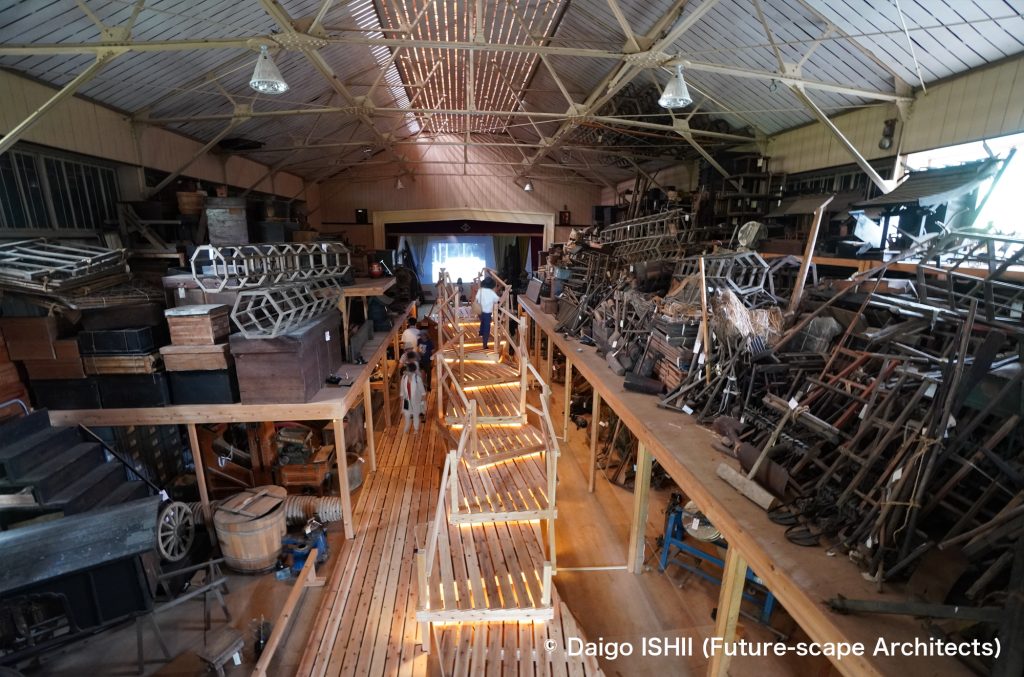


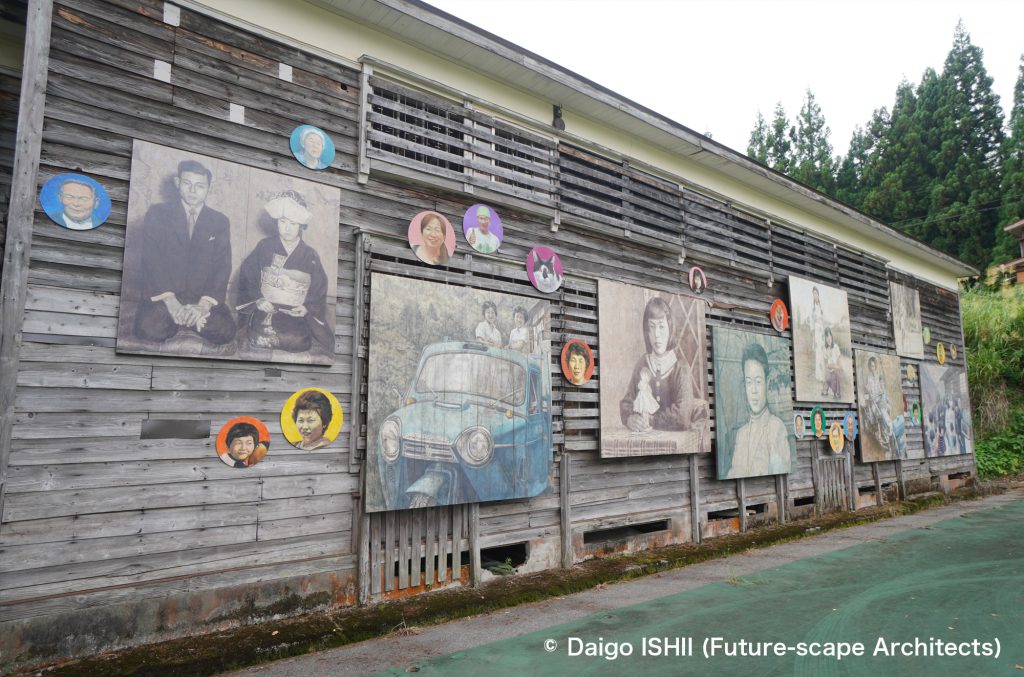
2024 Takafumi FUKAZAWA and others ”Akeyama Arts Center”
The Oakazawa Elementary School, which closed in 2021, was renovated into a place to learn about and inherit the folk customs and beliefs of Akiyama-go area, and to exhibit artworks based on them. Various artists and researchers will use this place as a base for their activities.
English Website
https://maps.app.goo.gl/c4LDHdtRFKjFucoJ9

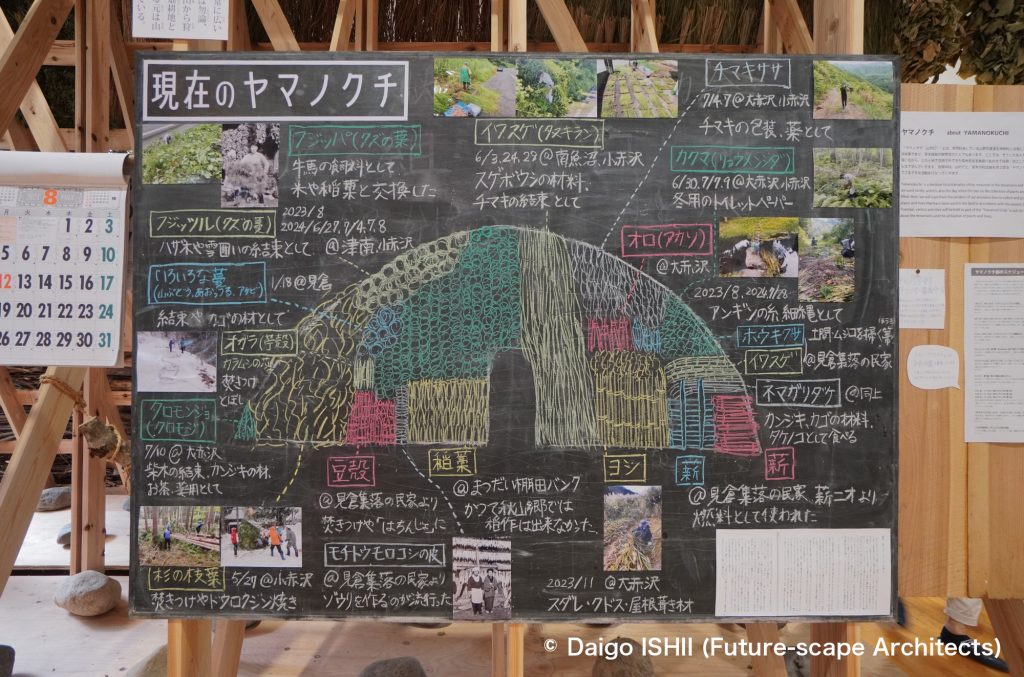
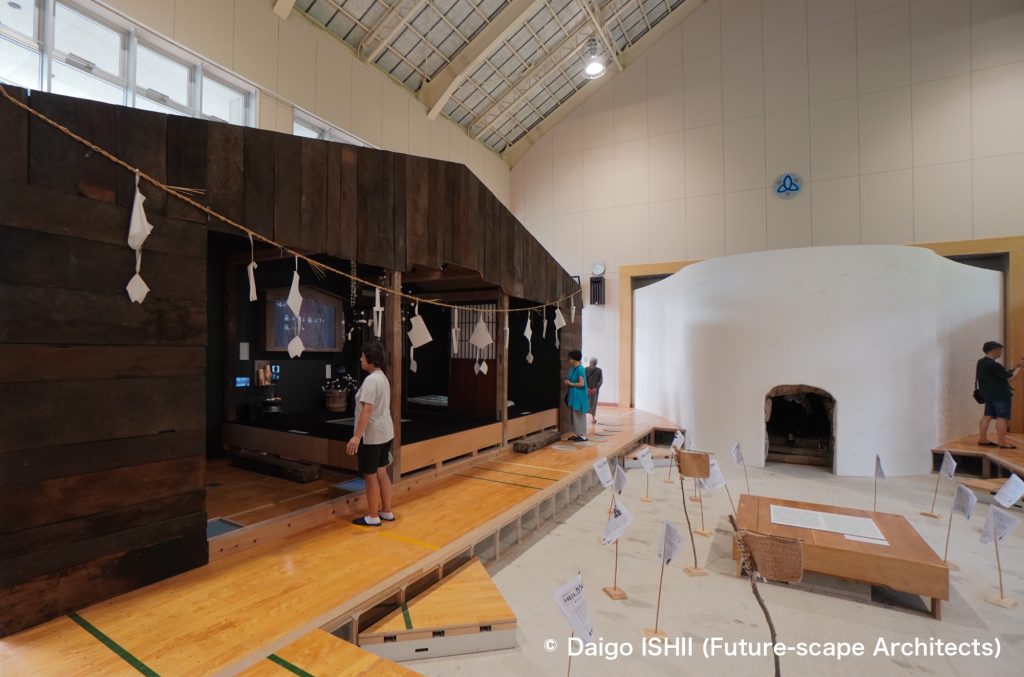

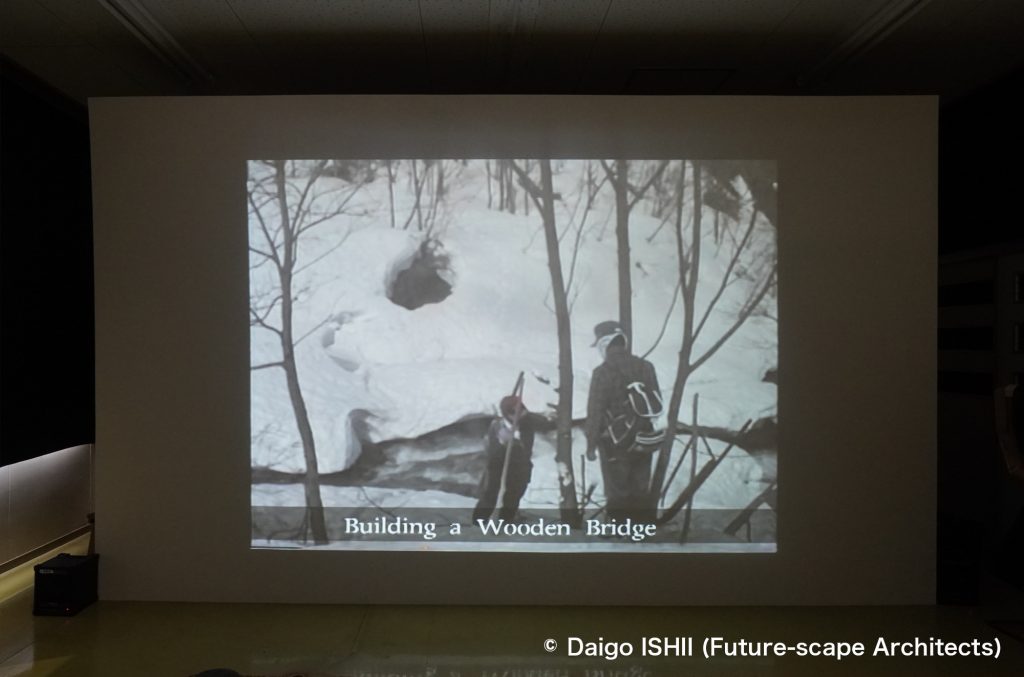
2006 Takuboku KURATANI ”Last Portrait - Returning to the Eternity” (Closed)
In a 100-year-old house in Nakayama community, the artist installed photos of the former residents, and in the studio set up inside, he took and exhibited photos of visitors to the house, as he believed that taking photos of the deceased was a way of confirming who you were now. The renovation design was undertaken by Sotaro Yamamoto Design Atelier.
English Website
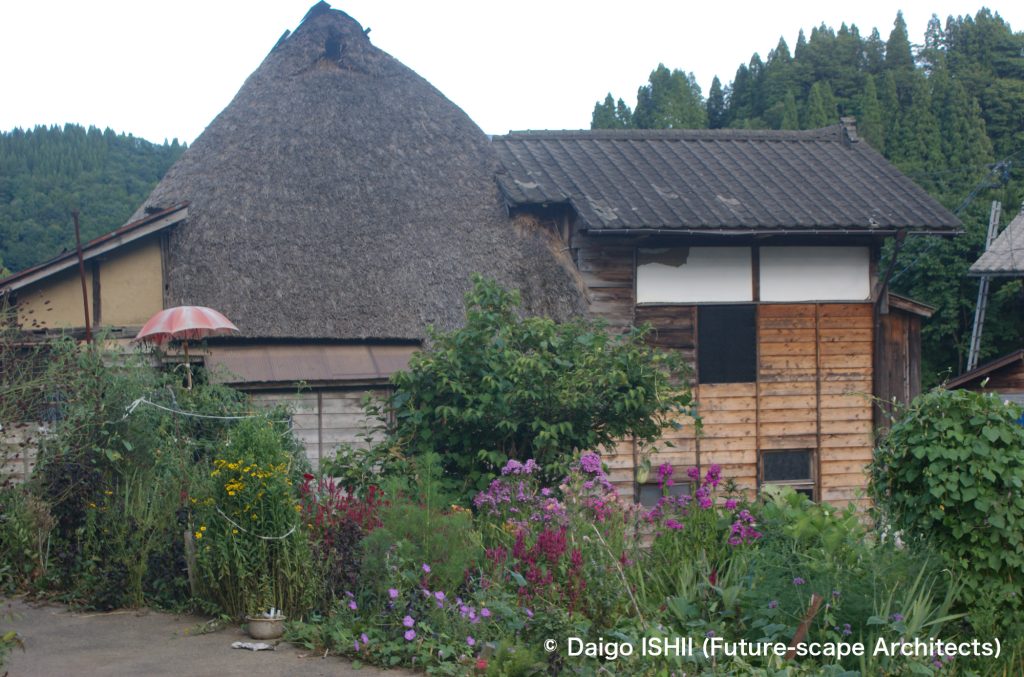


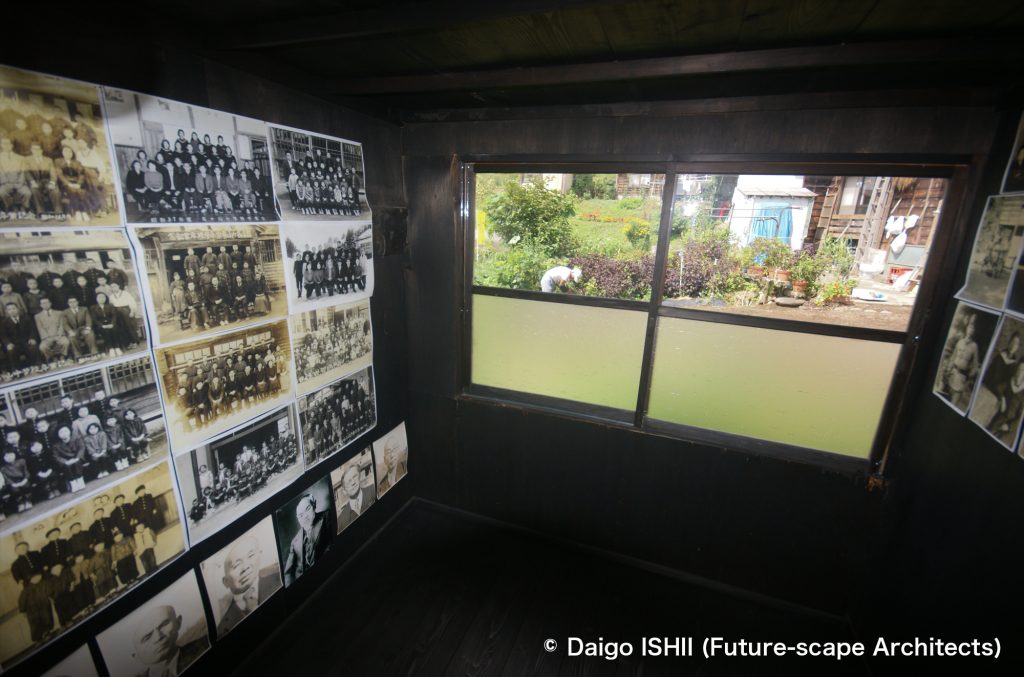
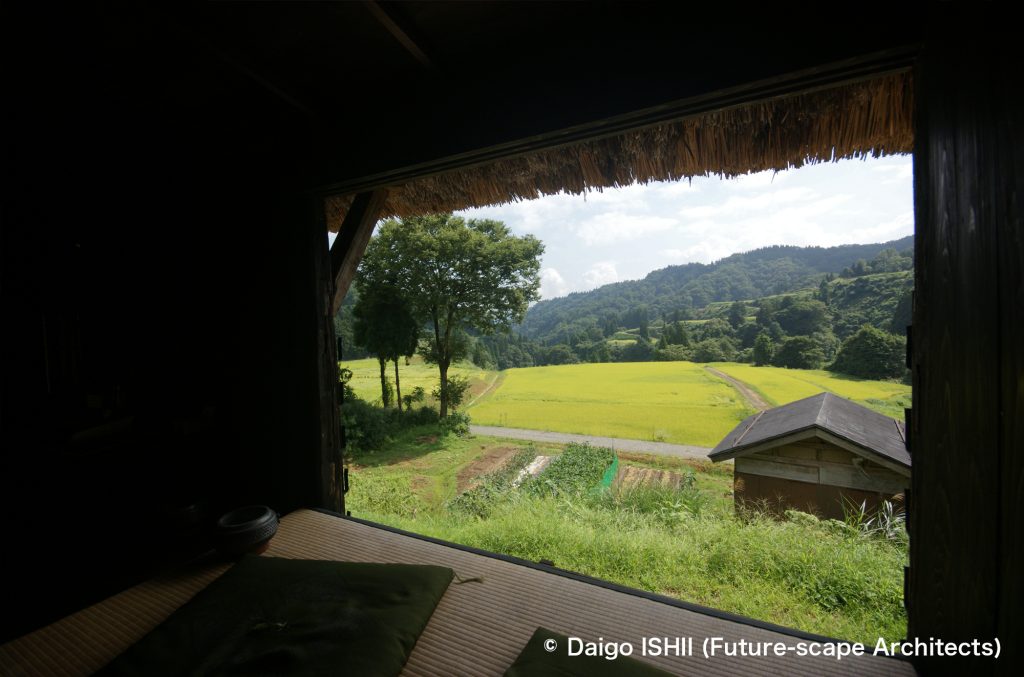
Time Visualizing abstract time itself as art
2003 Tatsuji USHIJIMA ”Unite / Move around / Workings” (No longer in existence)
The light green room in "Nohbutai" designed by MVRDV has been turned into a museum shop. If looked closely at the photo, you can see that the plates is floating in the air. 20 plates hung from the ceiling of the shop with wire carried products rotated and went in cycles slowly inside the shop with a mechanism installed on the ceiling. It was neither a simple cycle nor a simple repetition of time, but rather a subtle, non-reproducible repetition of time in which each plates was influenced by the other plates to determine their path of movement. It was a very innovative shop, which incorporated the existence of time with both characters of reproducibility and non-reproducibility, into a commercial device, so I was sad that it was removed and the shop turned into an exhibition space after the renovation.
English Website



Time Chronological changes of artists : Christian BOLTANSKI
2000 Christian BOLTANSKI ”Les Linges” (No longer in existence)
Across the Kiyotsu River in the Imokawa district of Nakazato, he stretched 72 wires across the river and hung many used white clothes collected from local residents and people across the country. The old clothes fluttering in the wind evoked the presence of people who once had lived here but were no longer here.
English Website
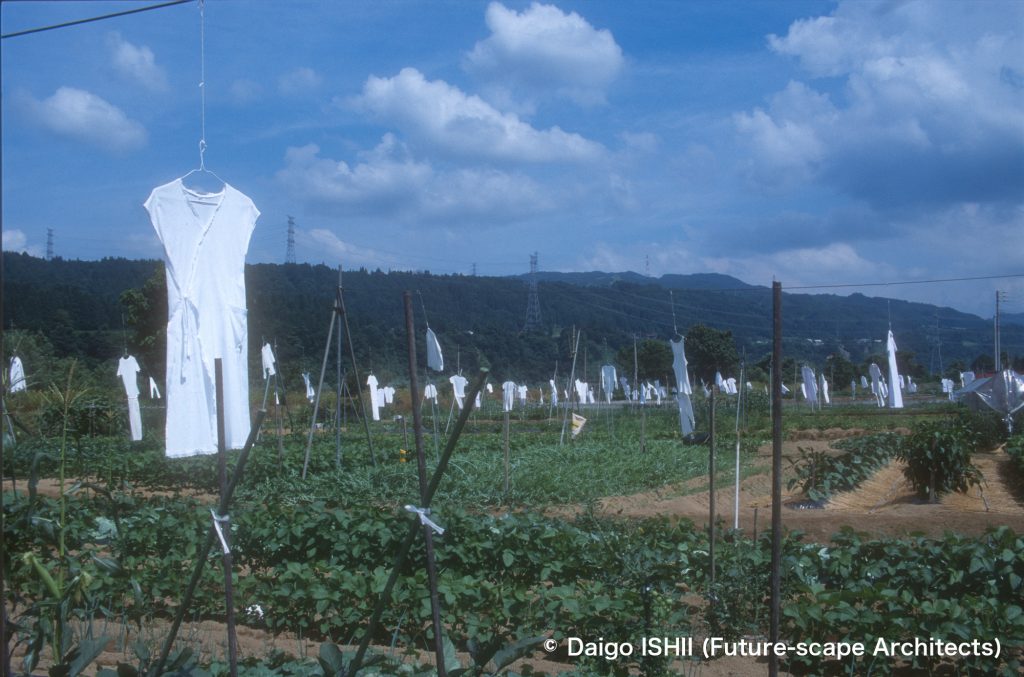
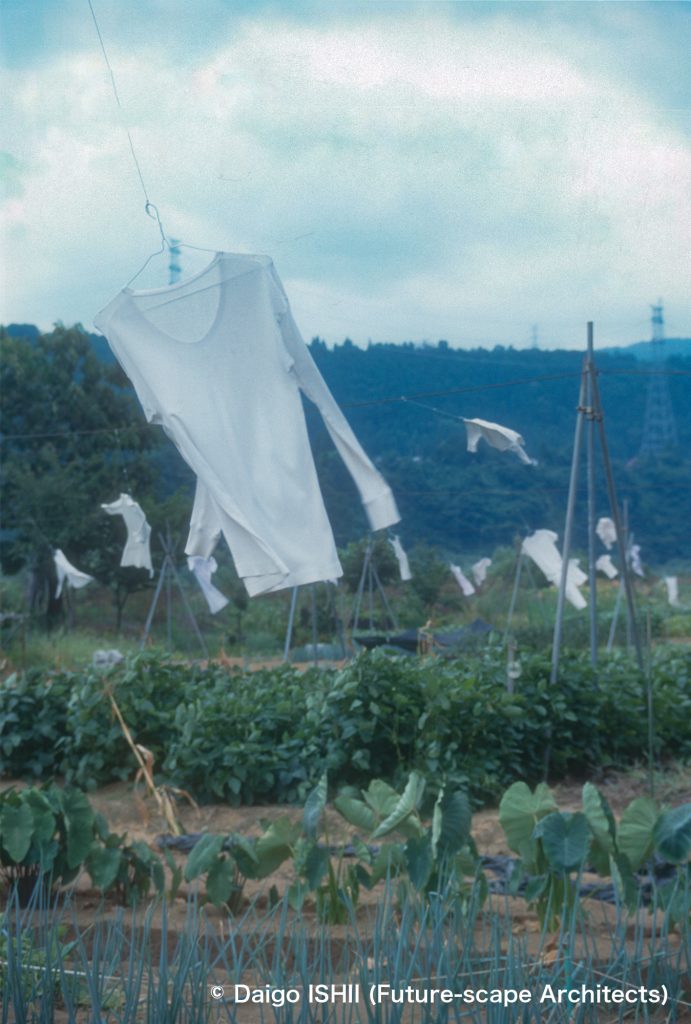
2003 Christian BOLTANSKI+Jean KALMAN ”Voyage d’Eté” (No longer in existence)
This work occupies the entire building of closed Higashikawa Elementary School in Matsunoyama. The stillness created by the electric fans that just kept turning and swaying the curtains, the flowers left on the desk, or furnitures covered with dust-proof cloth evoked not only the summer vibes of the many people who had passed by, but also my own childhood memories of a lost summer that can never be returned. This is one of the most splendid works in the Echigo-Tsumari Art Triennale, and it gave me a faint sense of rebirth and reincarnation beyond the absence, something I had never imagined in Boltanski's previous works, which have expressed absence in dark pieces.
English Website
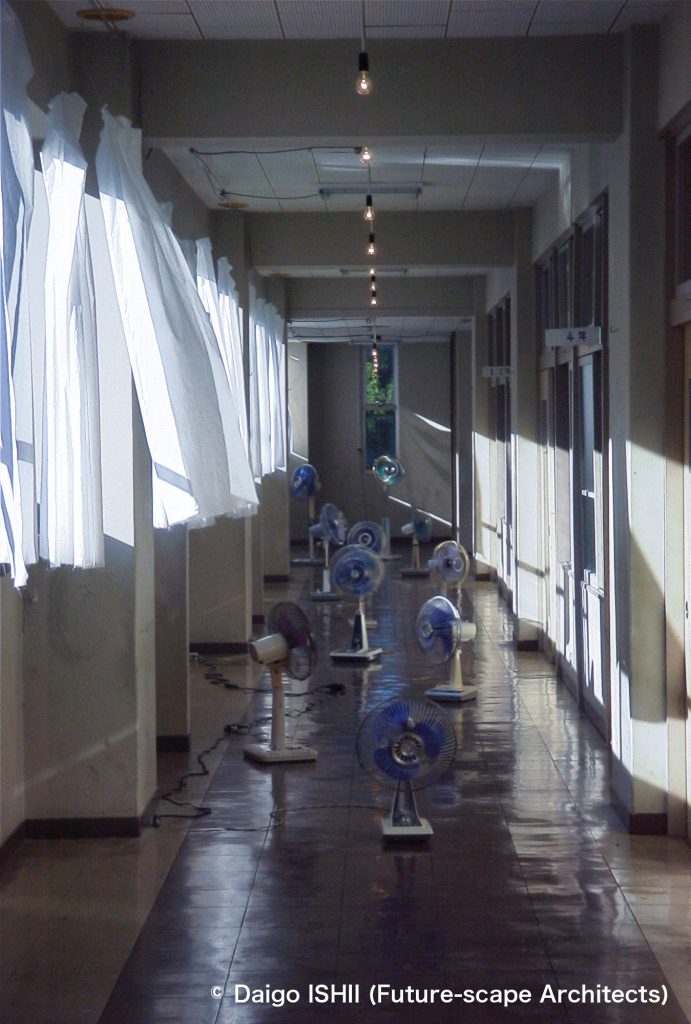



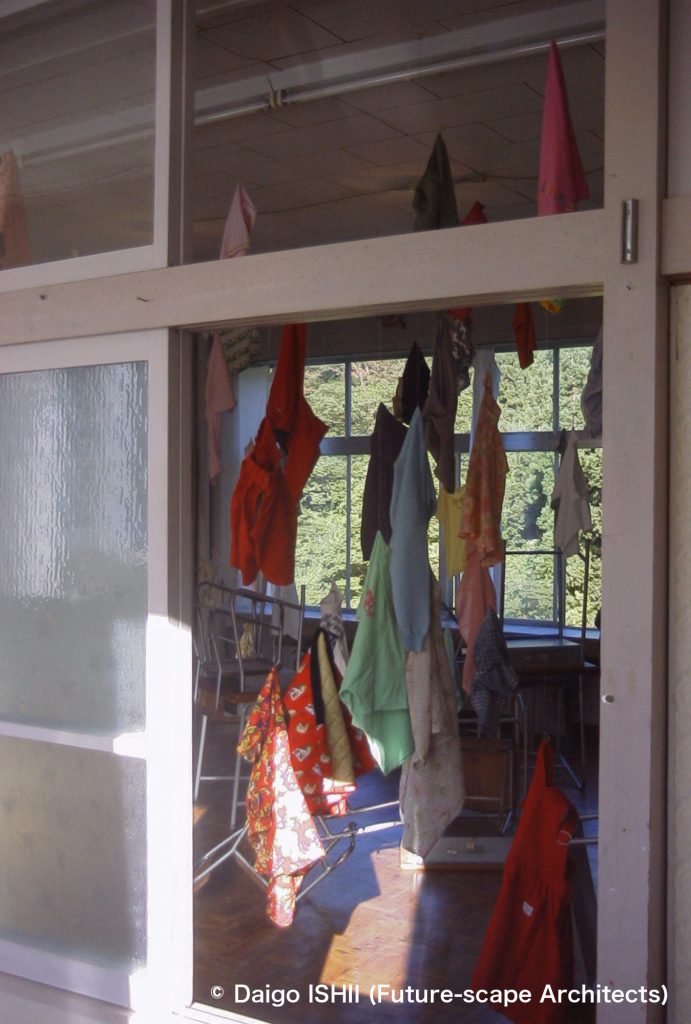

2006 Christian BOLTANSKI+Jean KALMAN ”The Last Class” (Now opening)
This work occupies the entire building of closed Higashikawa Elementary School in Matsunoyama. In contrast to the work created in 2003 in the same place filled with bright light, all the works are displayed in dark, enclosed spaces. In the old gymnasium as the entrance, you can feel the wind blown by many electric fans in the dim light of light bulbs, and smell the scent of straw laid on the floor. On the corridor connecting the gymnasium and the school building, you walk forward through the intense flashing lights, the constantly rotating ventilation fans, and the sound of a heartbeat, and go up to the second floor, where you will find a classroom hung with many black paintings, and in a classroom beyond that, fluorescent lights are emitting light from a coffin-like acrylic case placed between white curtains and white cloth. The memory and absence of the people who once lived here are powerfully impressing upon the viewer through their five senses. The renovation design was done by Prospector (Sohei Imamura/Atelier Imam).
English Website
https://maps.app.goo.gl/NRNFCvwAsNo3k9NK9
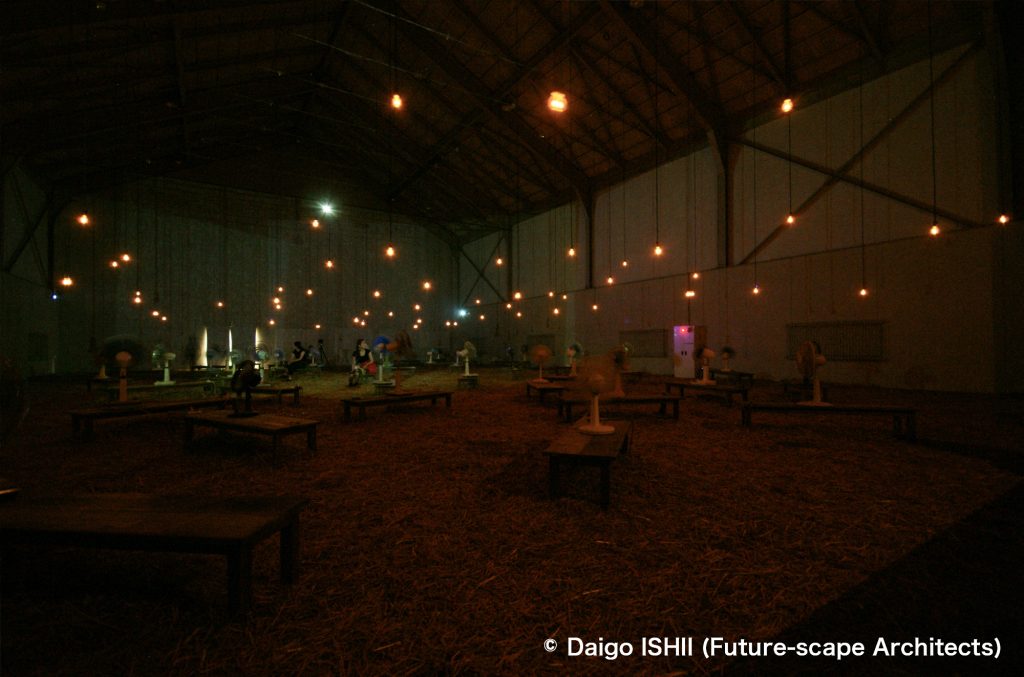
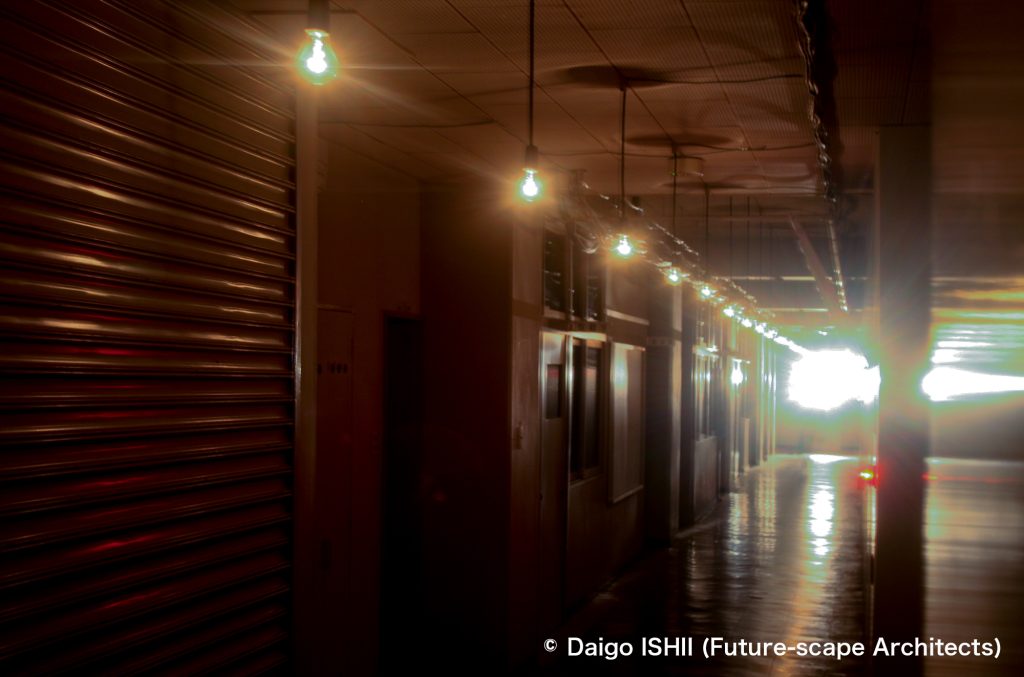
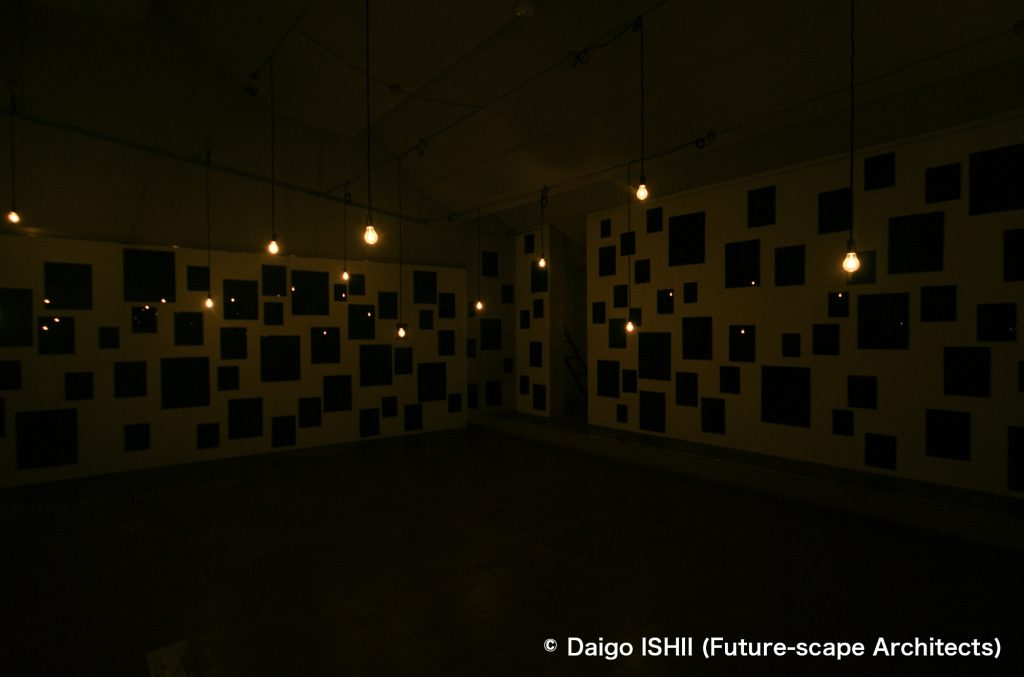
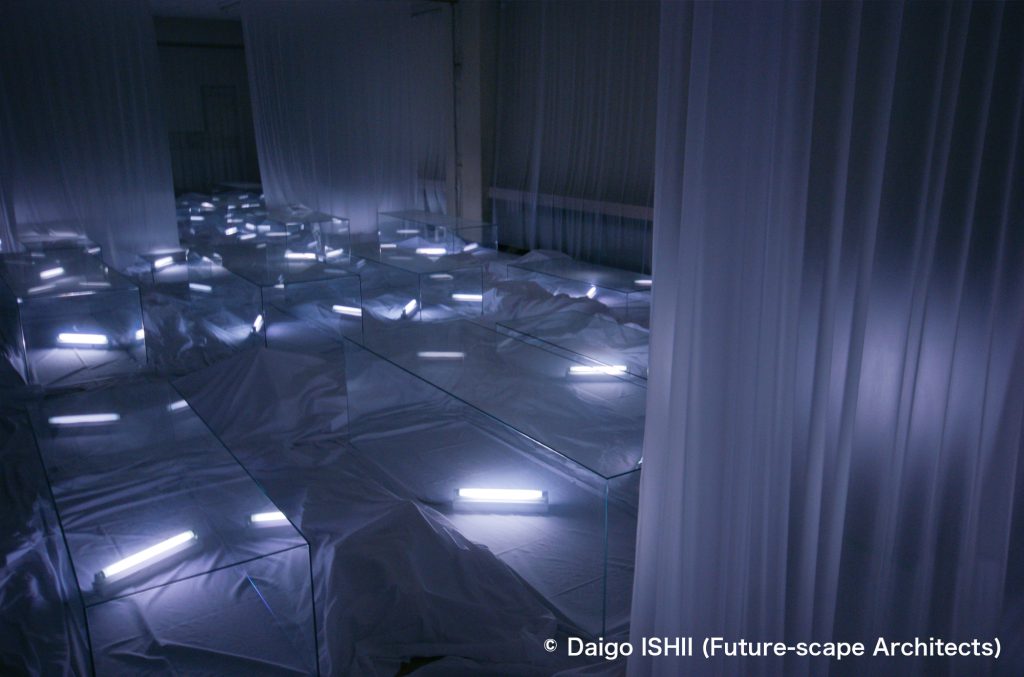
2012 Christian BOLTANSKI ”No Man's Land” (No longer in existence)
In the courtyard of Kinare in Tokamachi, a 16-ton mountain of used clothing was created. A giant crane grabed and droped a lot of used clothing, synchronizing with the sense of absence after the Great East Japan Earthquake.
English Website

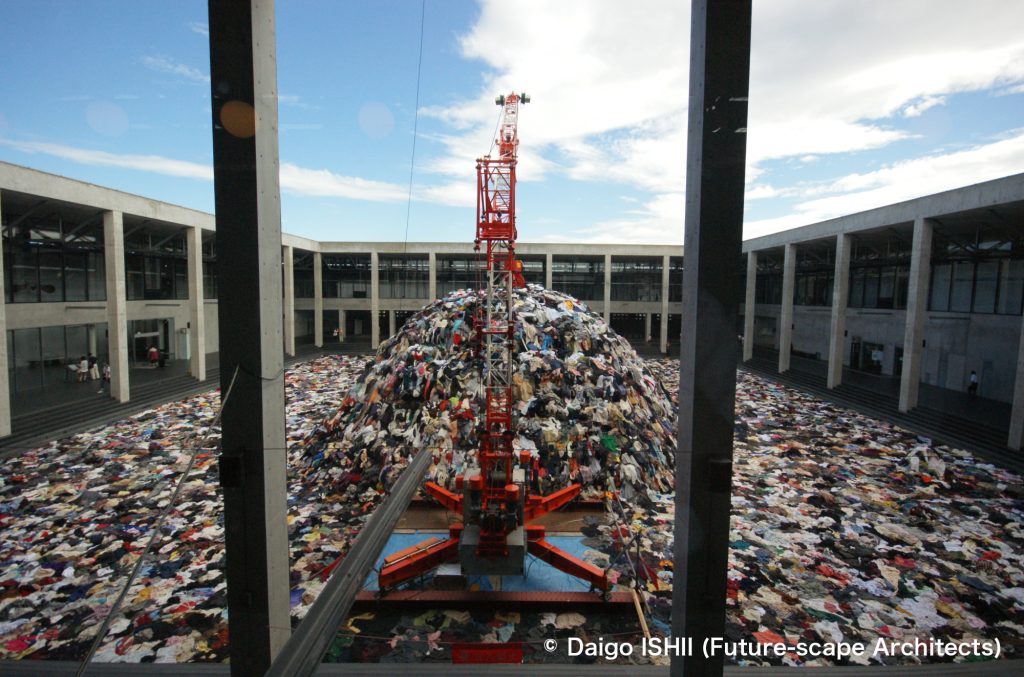
2018 Christian BOLTANSKI ”Théâtre d’ombres (Theatre of Shadows)” (Now opening)
This work is installed in one room of the closed Higashikawa Elementary School in Matsunoyama. Shadows of skeletons, bats, angels, and other figures on the border between life and death move on the wall, evoking the existence of life and death.
English Website
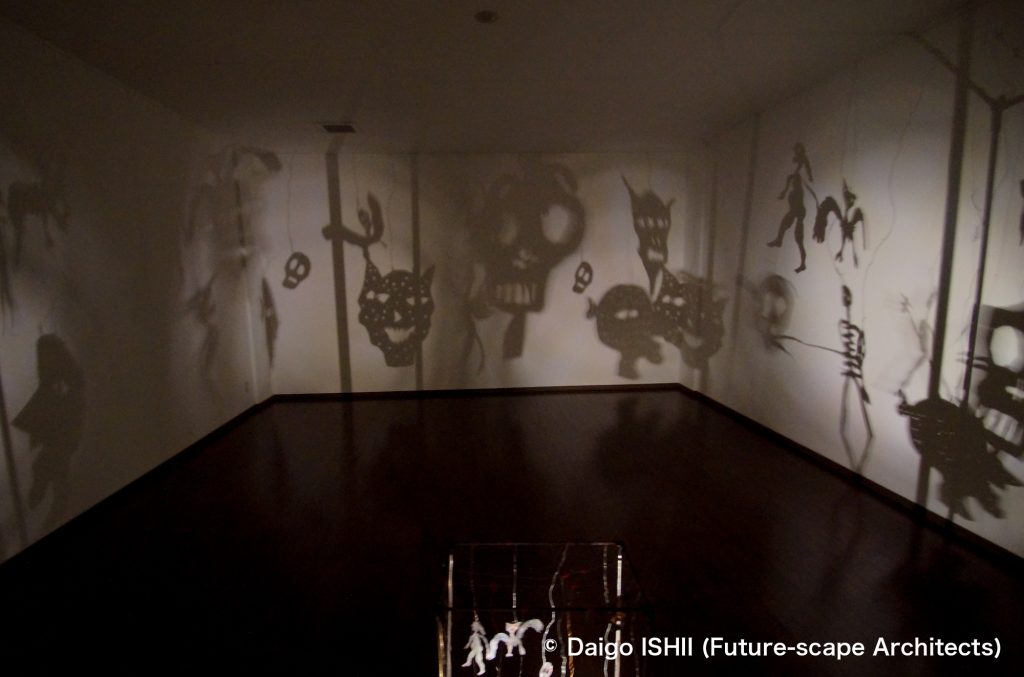
2022 Christian BOLTANSKI ”Forest Spirit” (No longer in existence)
In the forest of Matsunoyama, photographs of the eyes of 20 Japanese men and women were installed. The photographs are printed on a net-like cloth, so they overlap with the forest.
English Website
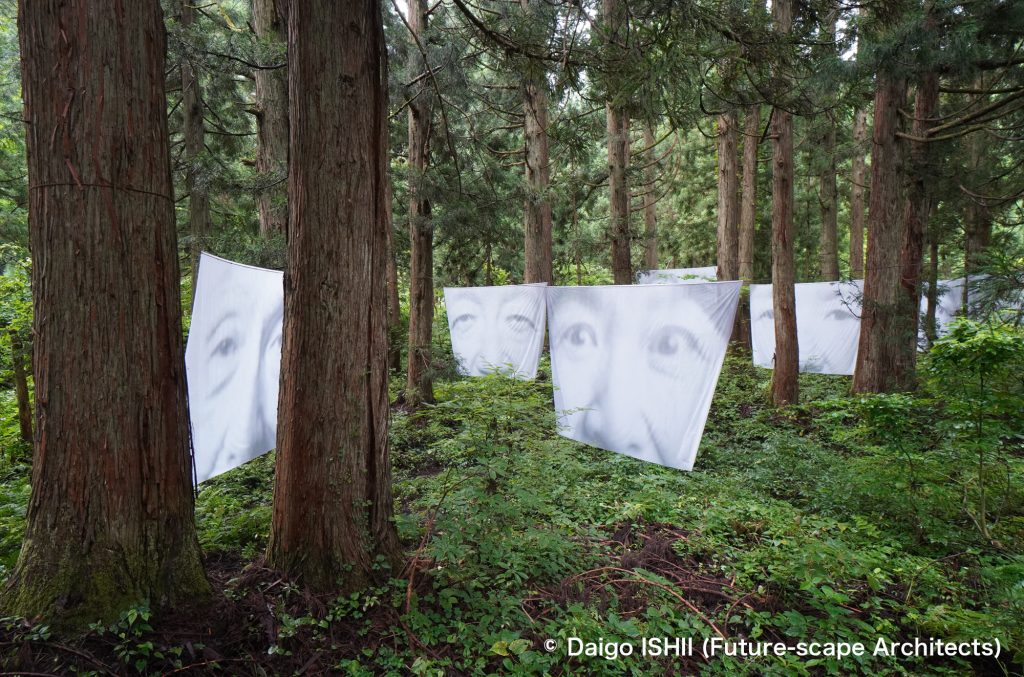
Time Chronological changes of artists : Ilya & Emilia KABAKOV
2000 Ilya & Emilia KABAKOV ”The Rice Fields” (Now opening except winter)
This work was installed at Matsudai Field Museum. Poems describing the rice cultivation process are drawn in the air with wire, and sculptures depicting rice cultivation work are installed on the rice terraces on the opposite side across the river. When viewed from the terrace of NOHBUTAI, the poem and sculpture blend together to become one work of art.
English Website
https://maps.app.goo.gl/mbngKXbGSZnyJ8yw8
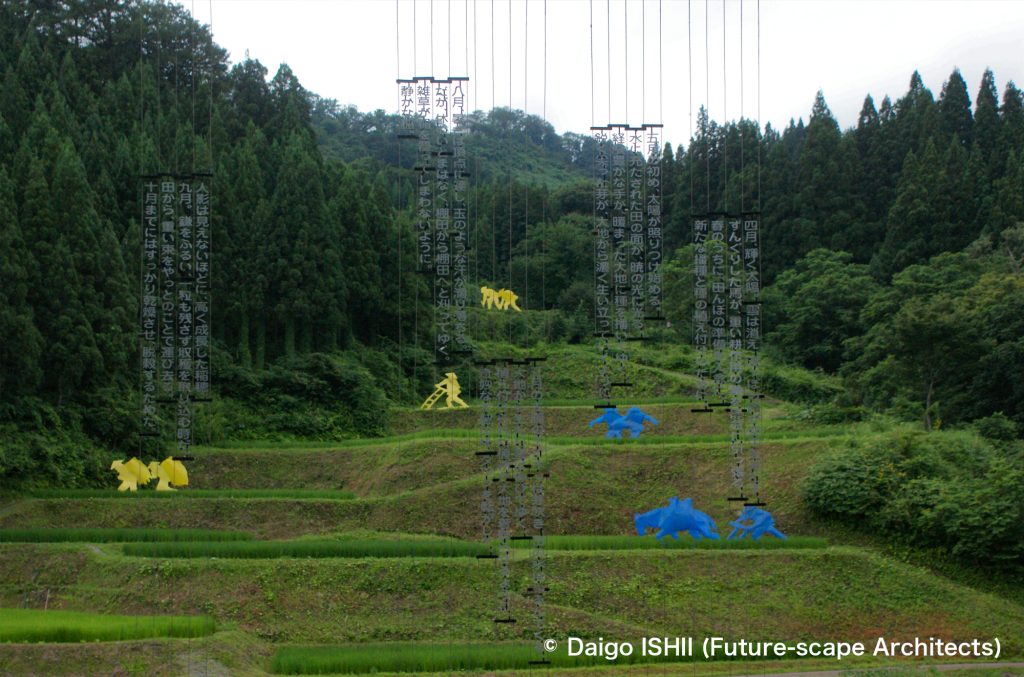
2015 Ilya & Emilia KABAKOV ”The Archi of Life” (Now opening except winter)
This work was installed on Matsudai Filed Museum. Five statues representing different stages of life, from birth to old age, are installed on top of the arch.
English Website
https://maps.app.goo.gl/NHBXKToJt4Xy77TY9
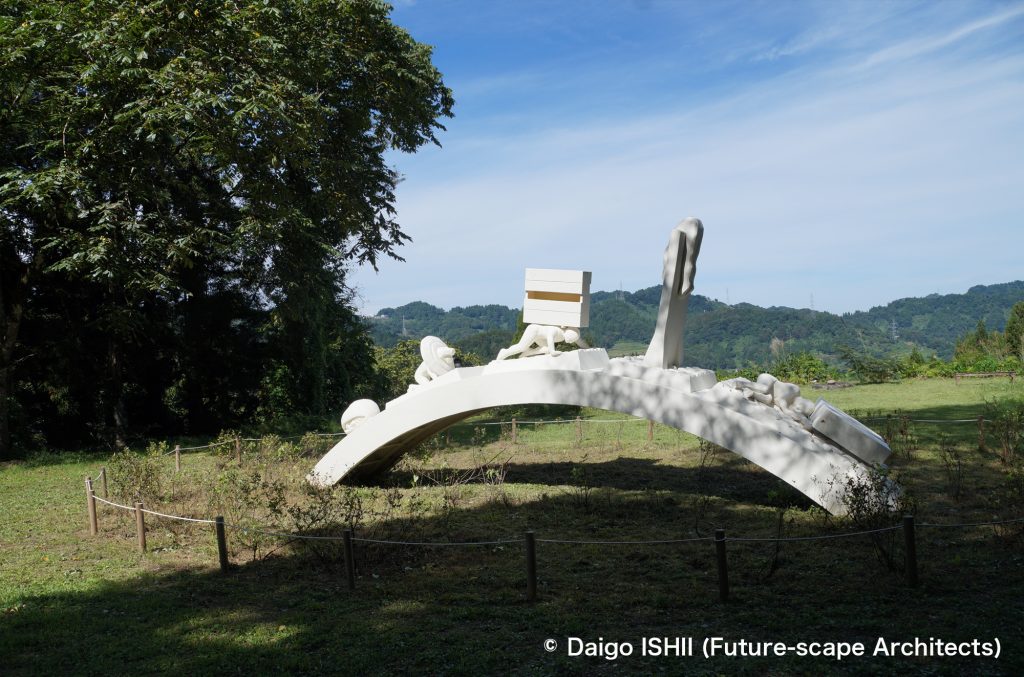
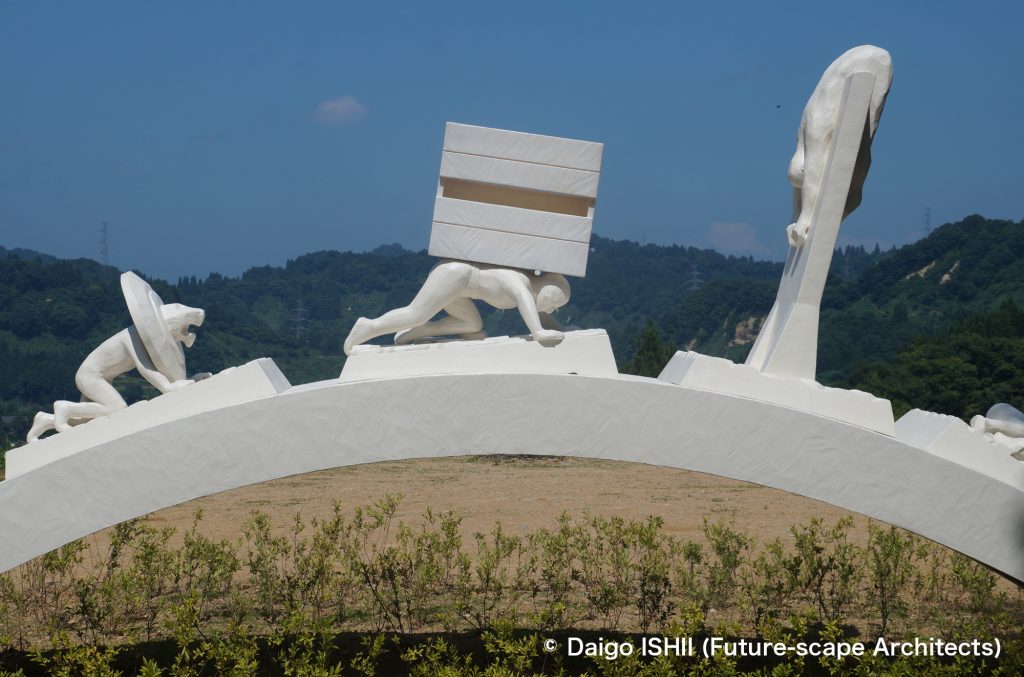
2021 Ilya & Emilia KABAKOV ”16 Ropes” (Now opening)
This work is installed at MonET. 100 small pieces of trash are suspended from 16 ropes, with notes attached to them. The words written on the notes are conversations that people casually exchange in their daily lives. The work is full of empathy for the lives of ordinary people.
English Website
https://maps.app.goo.gl/7QmGo37u7JTsVSwGA
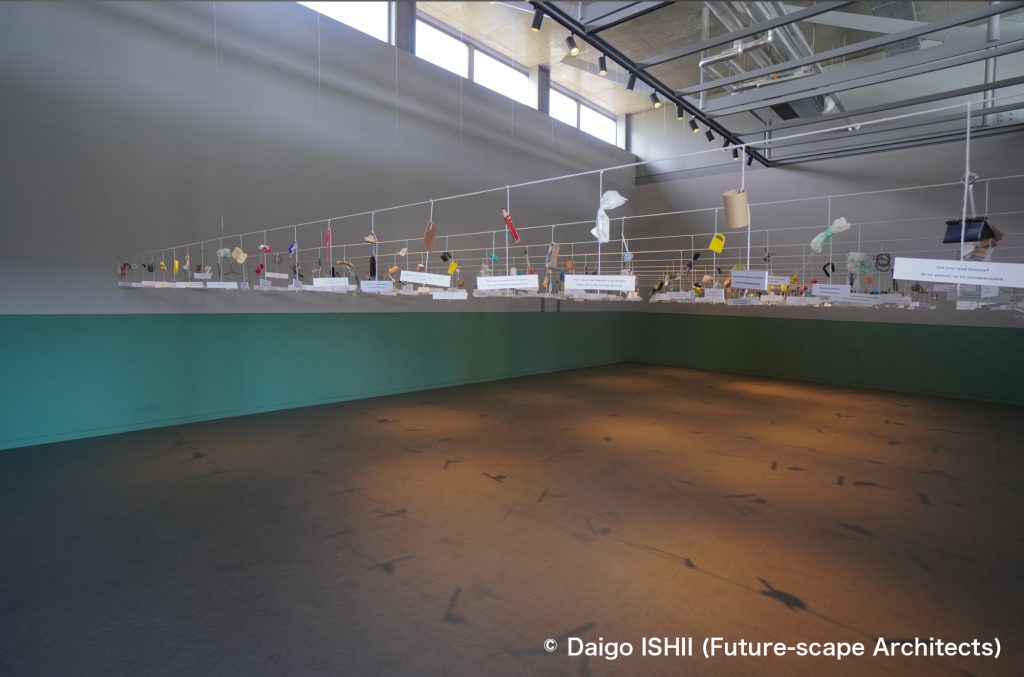

2021 Ilya & Emilia KABAKOV ”The Monument of Tolerance” (Now opening except winter)
The "Monument to represent the connections between people" was proposed by Kabakov in 2020, when the Covid-19 began to spread. Inside, paintings and a model of the "The Ship of Tolerance" project are on display, in which children from around the world combined their drawings to create sails and learned about culture and ideas on board. The design of the building was created by Osamu TOSHIMITSU and Genshu TAO.
English Website (The Monument of Tolerance)
English Website (The Ship of Tolerance)
https://maps.app.goo.gl/viW2n1N9ye6wr7u59

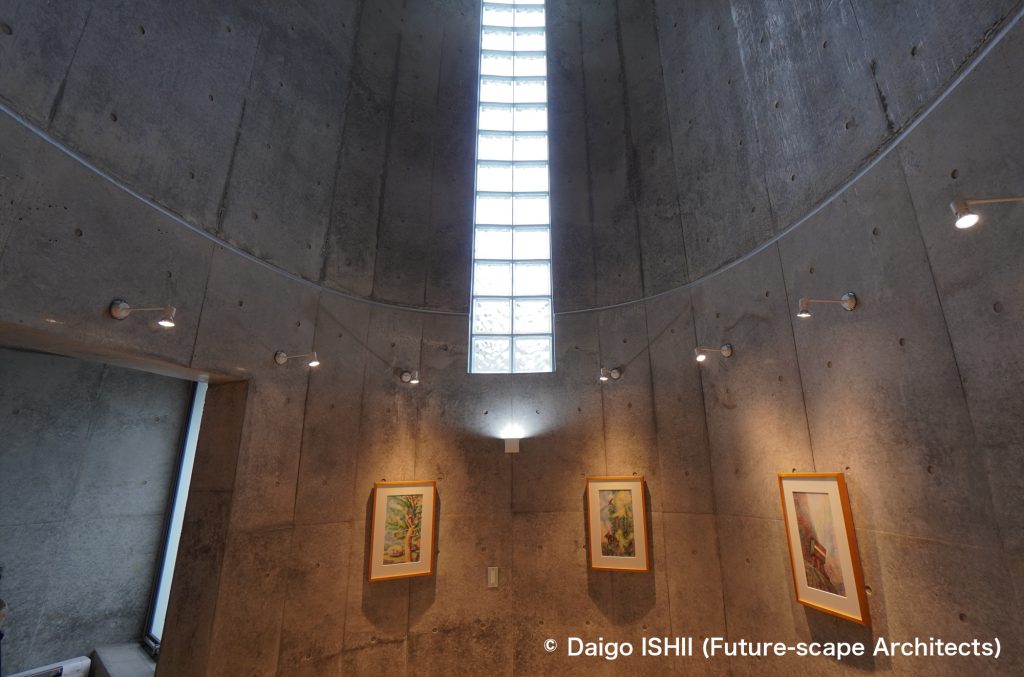
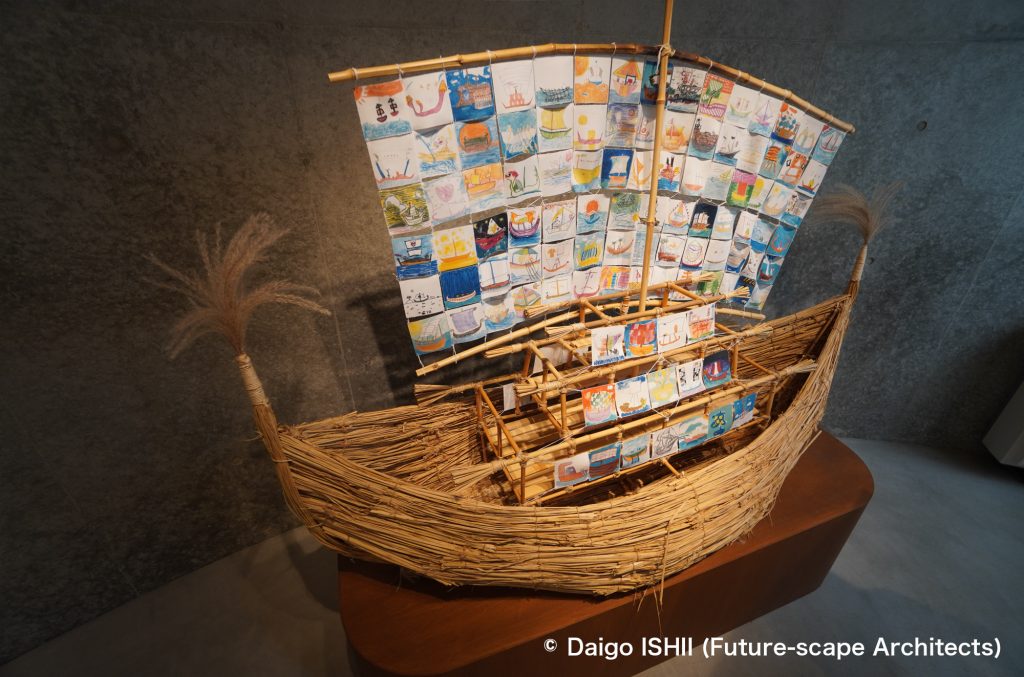
2021 lya & Emilia KABAKOV ”The Palace of Projects” (Now opening)
The exhibition showcases Kabakov's projects, featuring fictional characters living in the former Soviet Union, conveying the rich breadth of his imagination. Behind the exhibition is the "Artist's Library," where books about Kabakov are on display and available for viewing, and in the next room is "How to Improve Yourself," a realization of one of the "The Palace of Projects," as well as "10 Albums Labyrinth," which features drawings of stories starring 10 dreamers. The renovation design of the exhibition space was done by Osamu TOSHIMITSU.
English Website (The Palace of Projects)
English Website (The Artist’s Library)
English Website (How to Make Yourself Better)
English Website (10 Albums, Labyrinth)
https://maps.app.goo.gl/J7SjQJki3Es9SSsKA
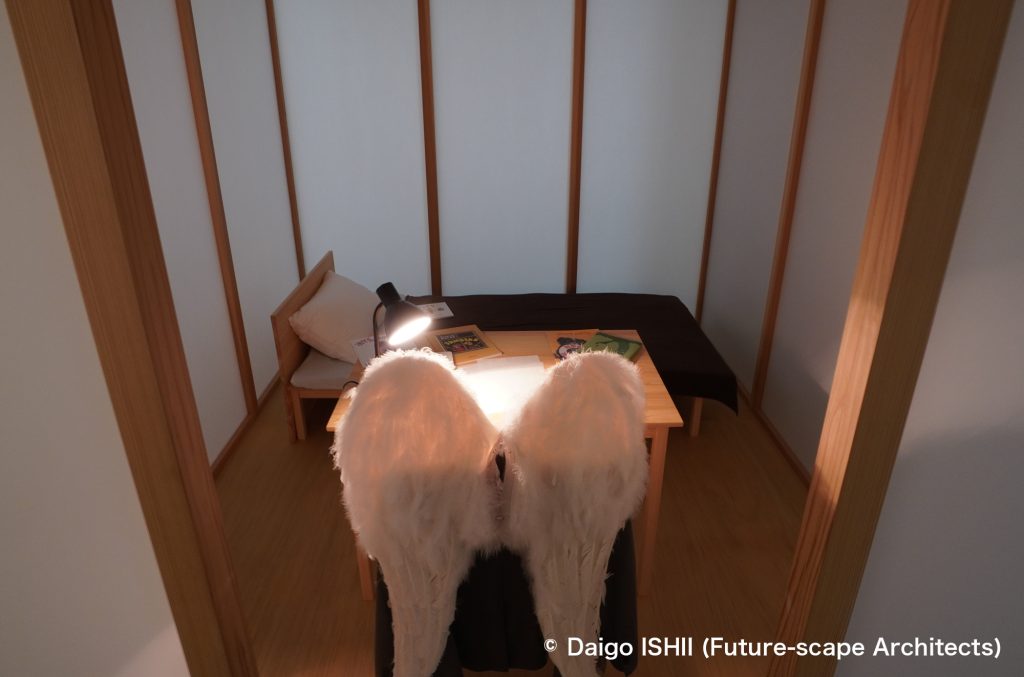
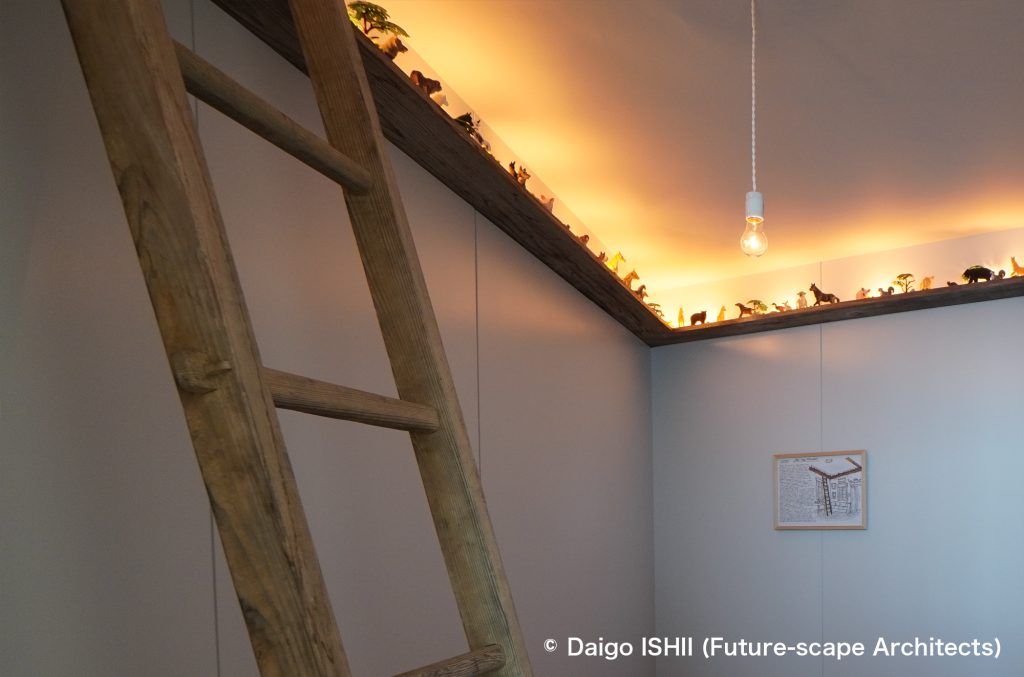
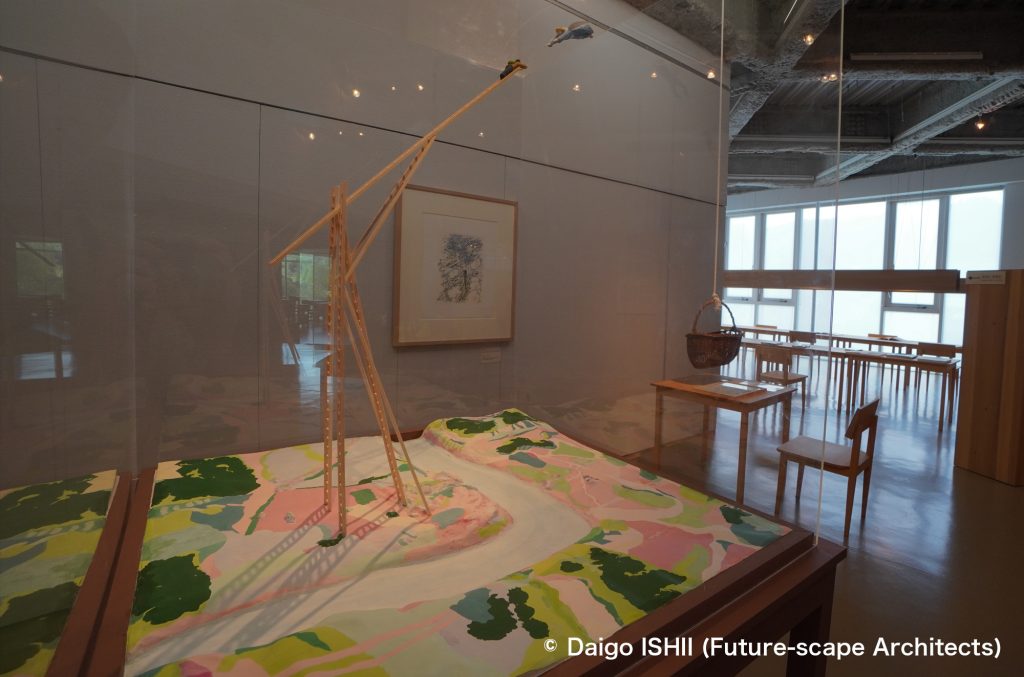
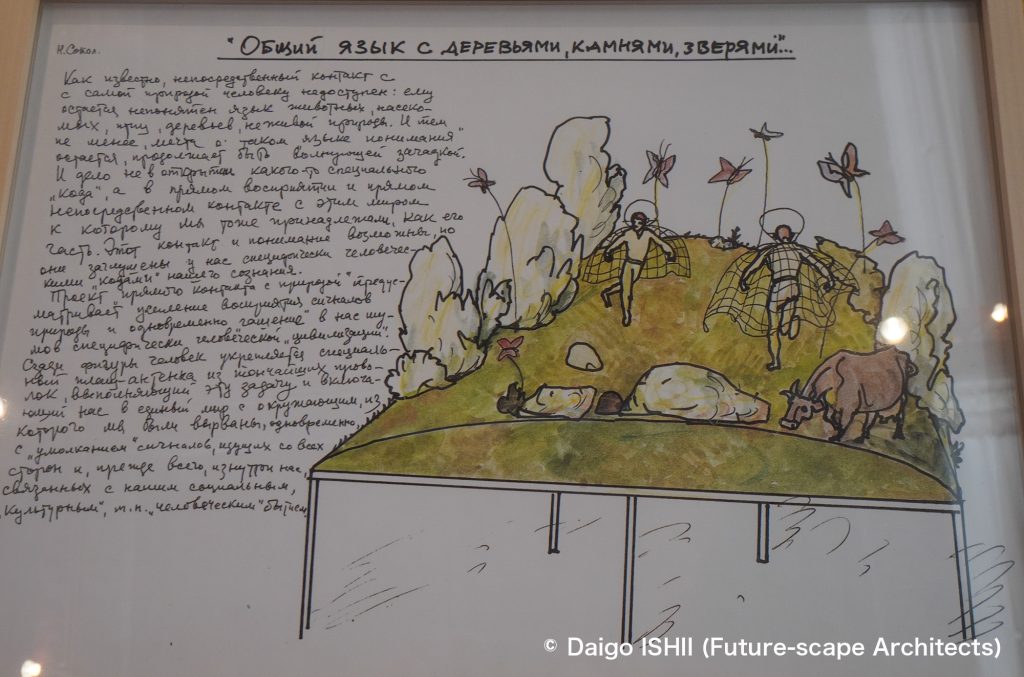
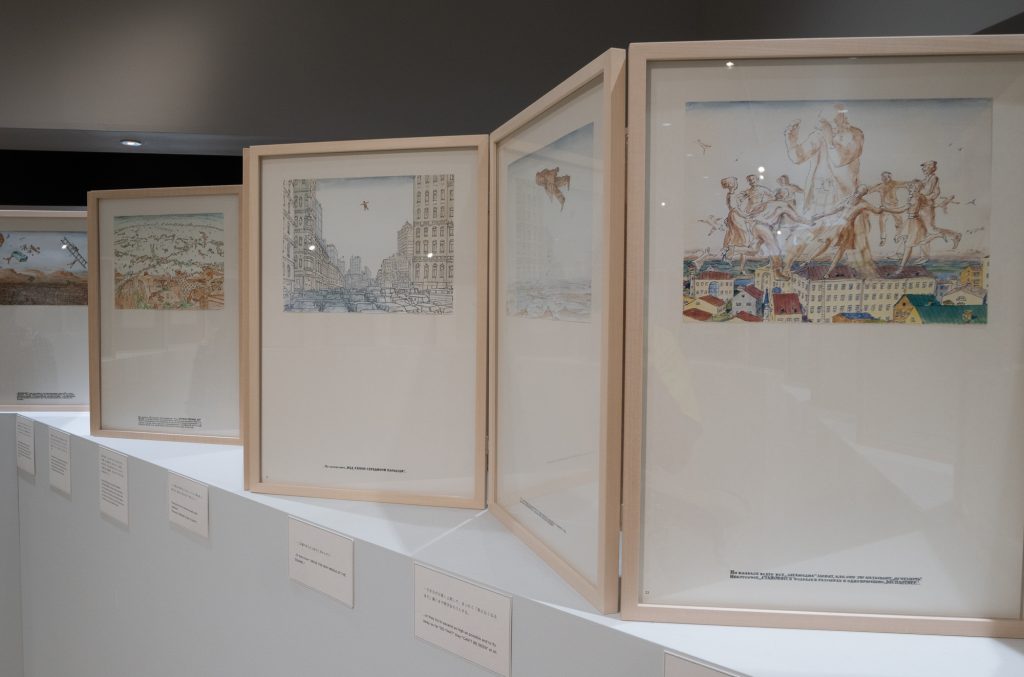
2024 Ilya KABAKOV ”The Unknown Kabakov: Art as a Way to Survive” (Opening during the 2024 event)
This exhibition traces the trajectory of KABAKOV's creative career through his drawings, spanning from his graduation project in the 1950s to his later years.
English Website
https://maps.app.goo.gl/7QmGo37u7JTsVSwGA
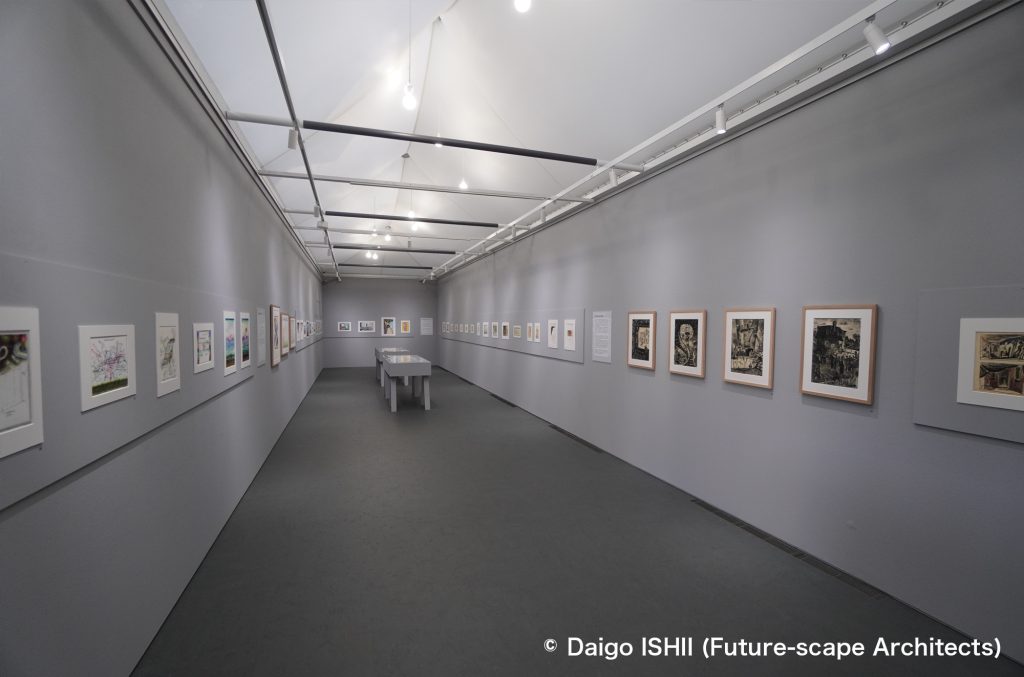
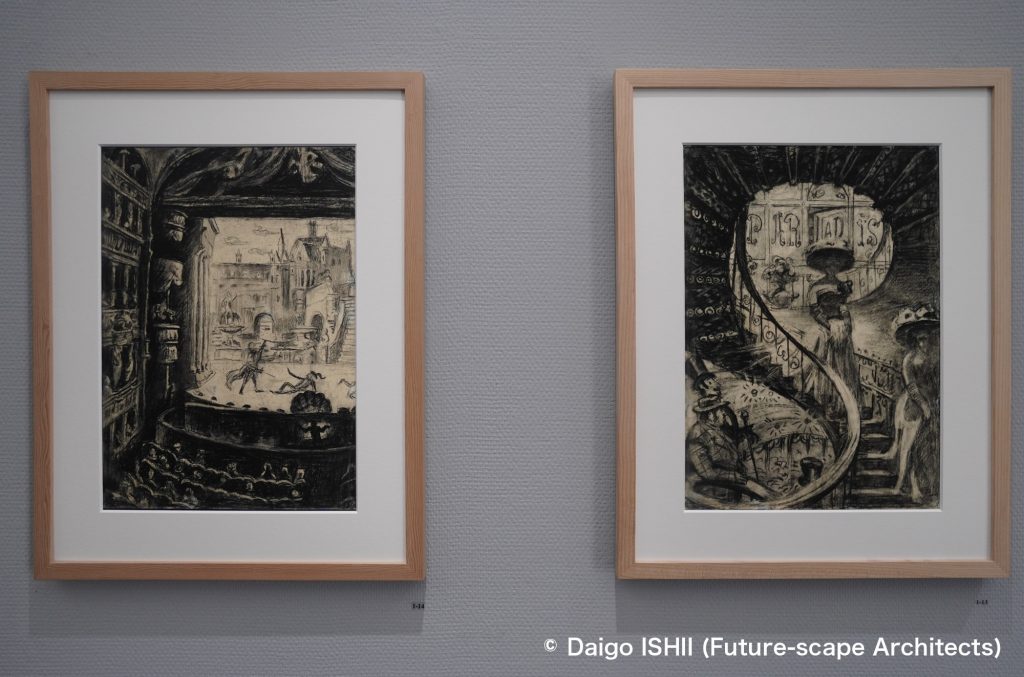
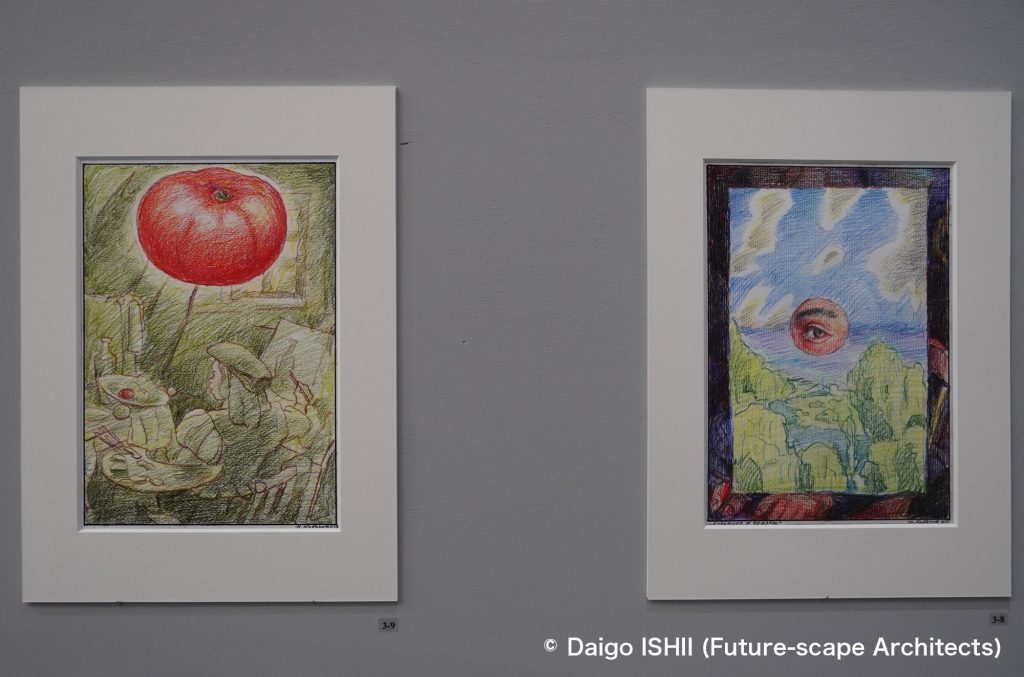
Time Physical time reflected onto the works
Time Chronological changes of artists : Hiroshi FURUGORI
2006 Hiroshi FURUGORI "The placenta - Misyaguchi" (Now opening except winter)
This work was created on a slope on the outskirts of the Ganyu community, where only a few families live. The work was built by digging up soil, presumably piling up and hardening it to create an enclosed, protected space. When completed, a roof was built and a strong sacred atmosphere was exuded. The work was designed by Masazumi Matsui.
English Website
https://maps.app.goo.gl/urCbif4w7igh1KoQ6

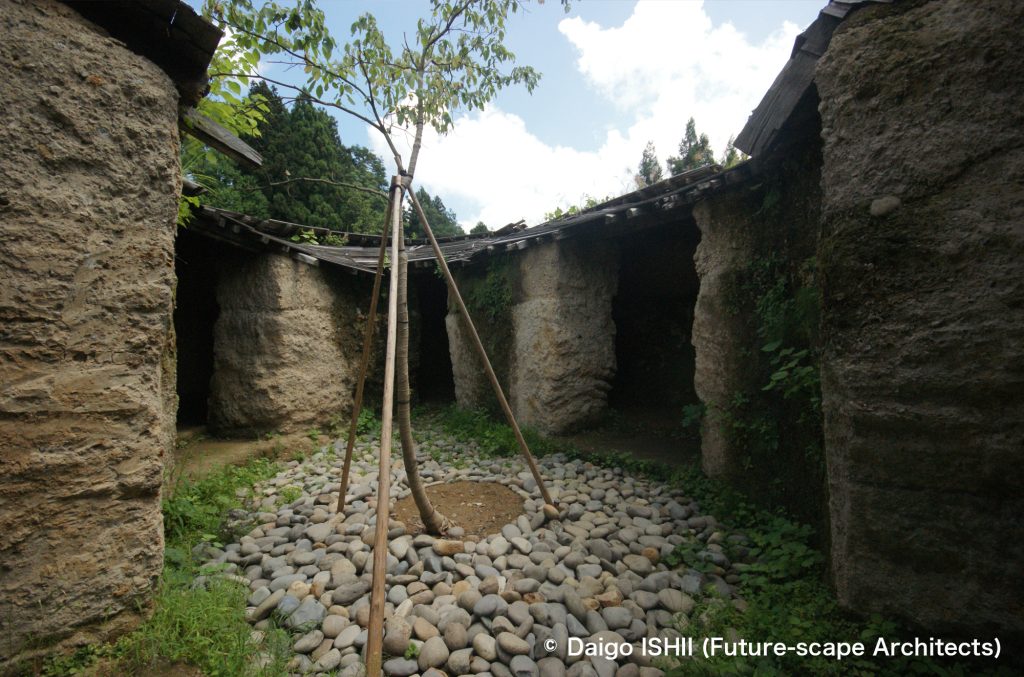
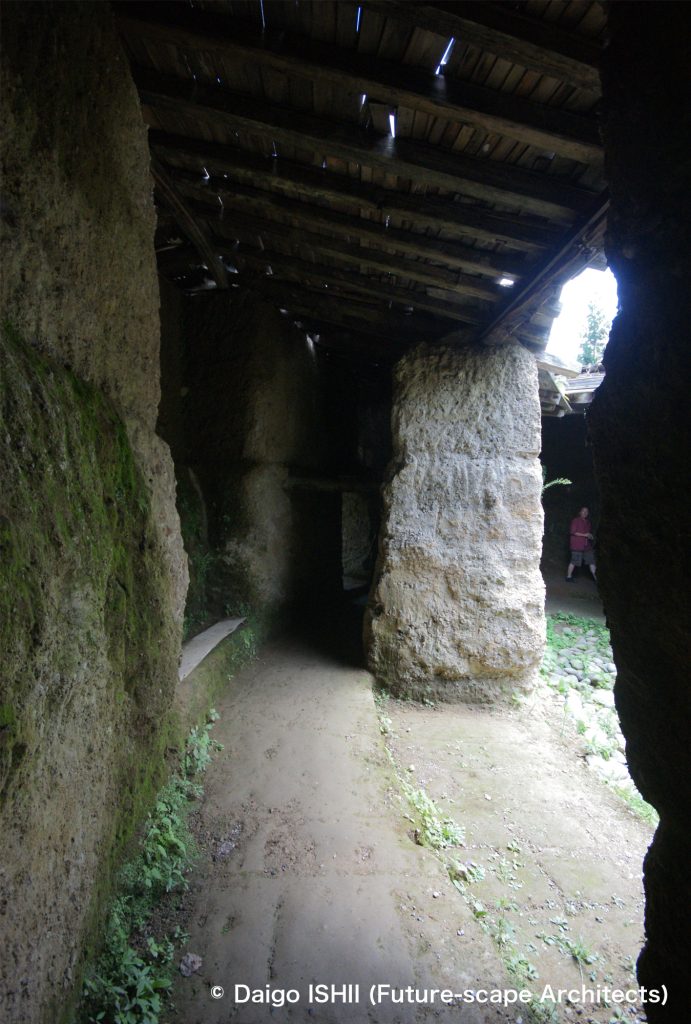

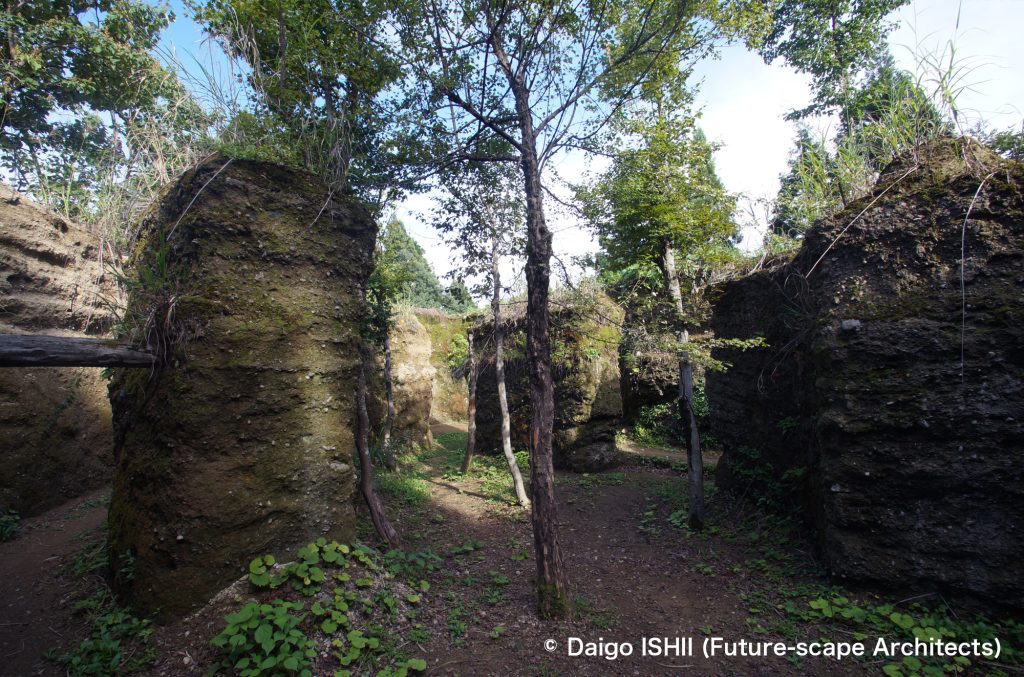
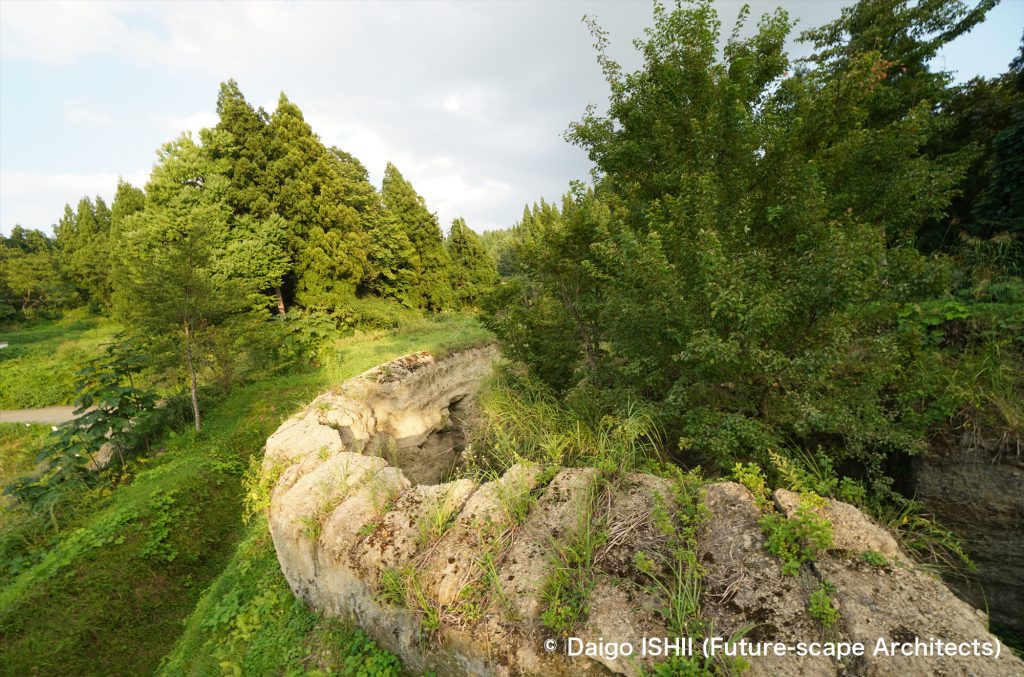
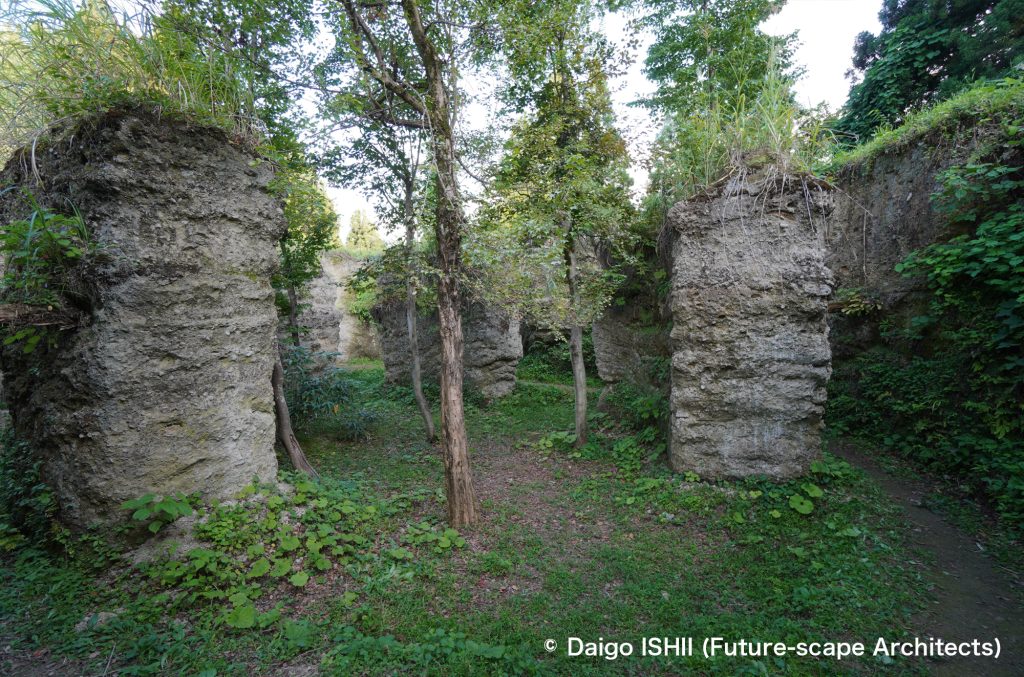
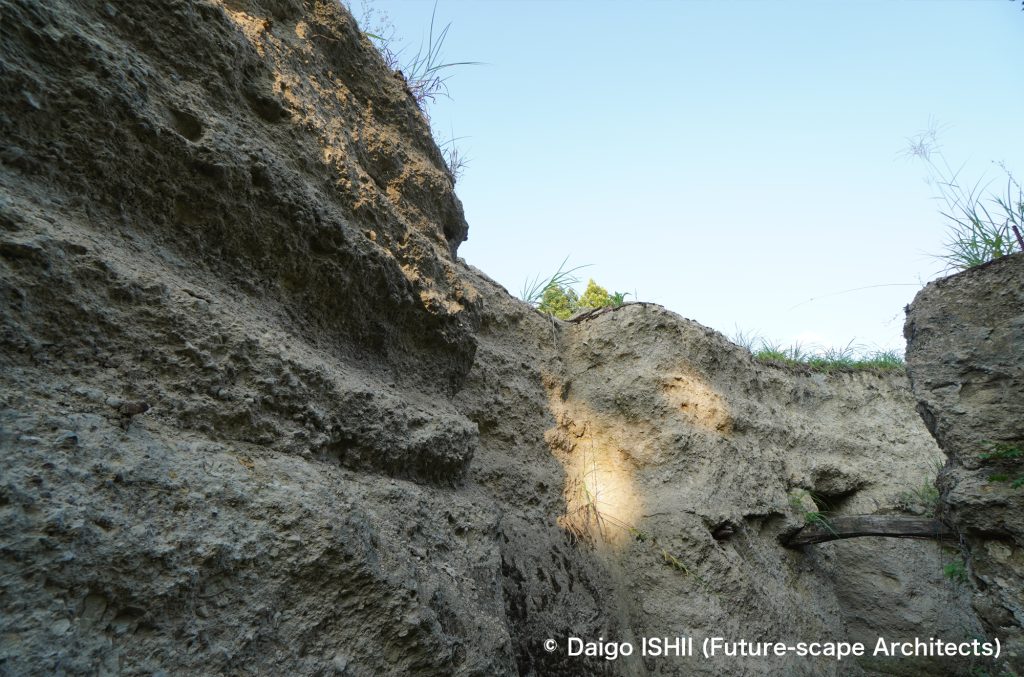
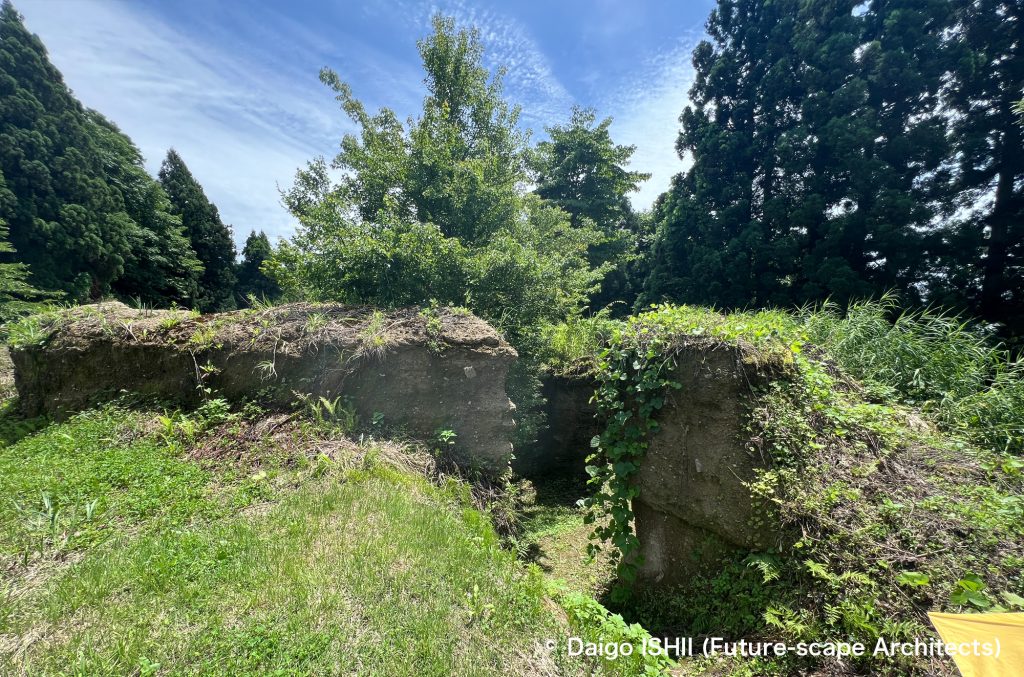
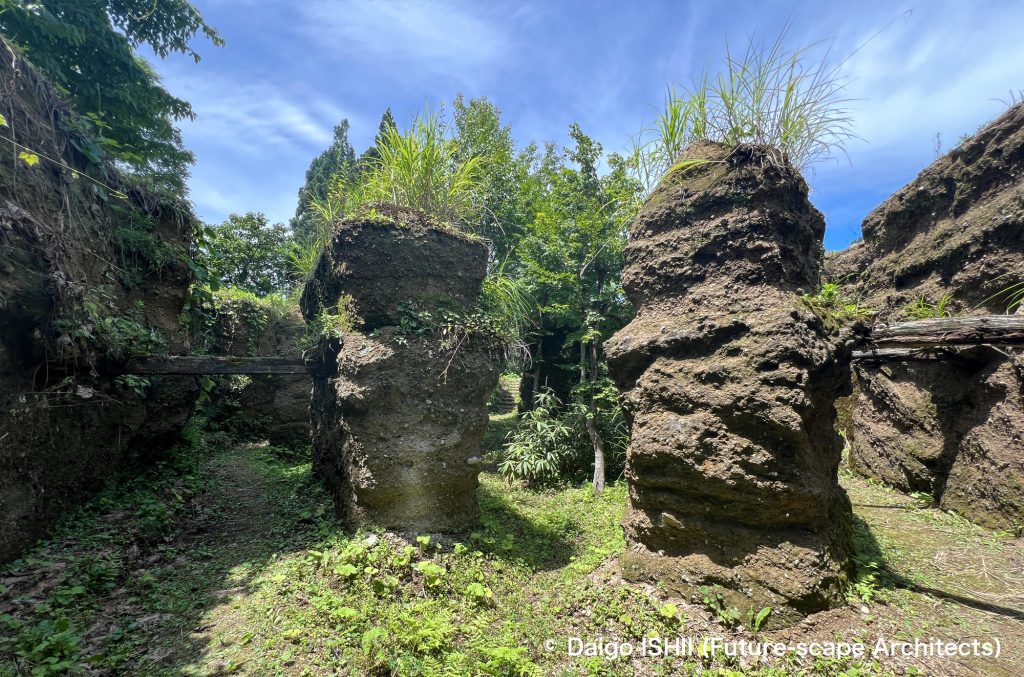
2000 Hiroshi FURUGORI ”UTSUMURO” (No longer in existence)
This work was created within the precincts of Senju Shrine in Kawanishi. It is based on the legend that Konohanasakuyahime, the deity of Senju Shrine, entered an Utsumuro birthing hut without a door and gave birth to three princes in the flames.
English Website

2003 Hiroshi FURUGORI ”BONKEI―Ⅱ (Archetype Landscape―Ⅱ)” (No longer in existence)
This work was created in the Gejo community. In this location, the artist intended to capture the atmosphere that he felt from the rice terraces.
English Website


Click here for your impressions
reference
"越後妻有アートネックレス整備事業計画書"(アートフロントギャラリー,1999)
"大地の芸術祭 越後妻有アートトリエンナーレ2000"(越後妻有大地の芸術祭実行委員会,2000)
"大地の芸術祭 越後妻有アートトリエンナーレ2000"(越後妻有大地の芸術祭実行委員会,2001)
"大地の芸術祭 越後妻有アートトリエンナーレ2003 ガイドブック"(大地の芸術祭・花の道実行委員会東京事務局,2003)
"越後妻有アートトリエンナーレ2006 大地の芸術祭ガイドブックー美術手帖2006年7月号増刊"(美術出版社,2006)
"公式ガイドブック 大地の芸術祭アートをめぐる旅ガイドー美術手帖2009年8月号増刊"(美術出版社,2009)
"現代美術がムラを変えた 大地の芸術祭"(北川フラム,角川学芸出版,2010)
"美術は地域をひらく 大地の芸術祭10の思想"(北川フラム,現代企画,2014)
"公式ガイドブック 大地の芸術祭 越後妻有アートトリエンナーレ2015"(現代企画室,2015)
"大地の芸術祭 越後妻有アートトリエンナーレ2018 公式ガイドブック"(現代企画室,2018)
"大地の芸術祭 越後妻有アートトリエンナーレ2022 公式ガイドブック"(現代企画室,2022)
"大地の芸術祭 越後妻有アートトリエンナーレ2022 公式ガイドブック"(現代企画室,2024)
大地の芸術祭ウェブサイト
Echigo Tsumari Art Field Website
西都市観光協会ホームページ
Wikipedia
Please do not use or upload our photos without permission.



